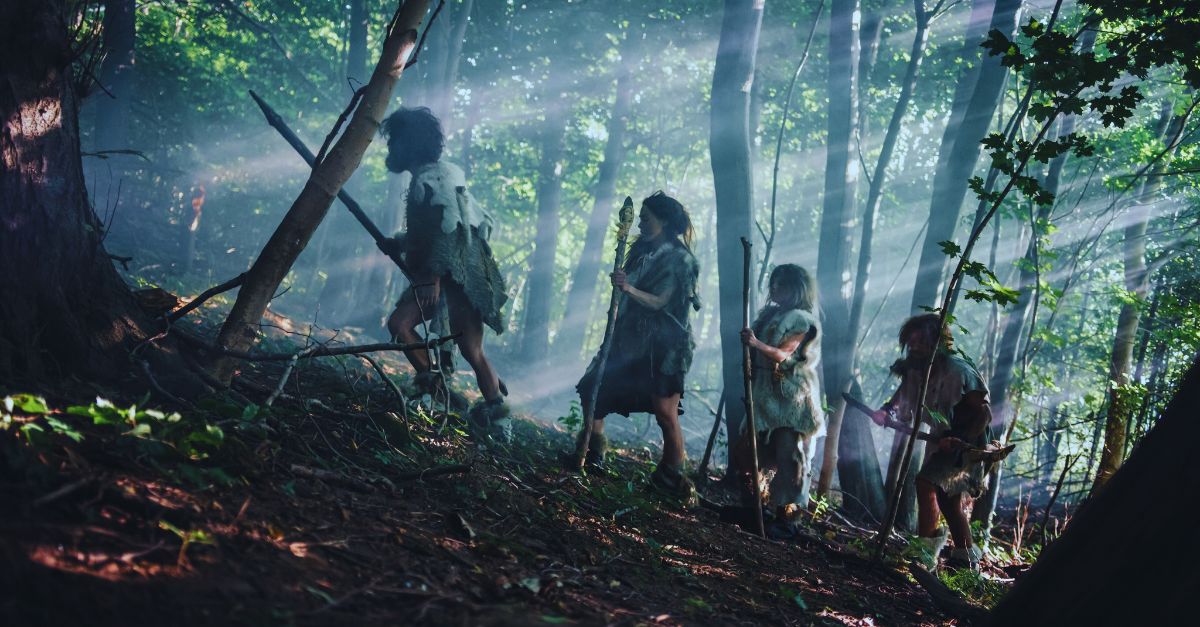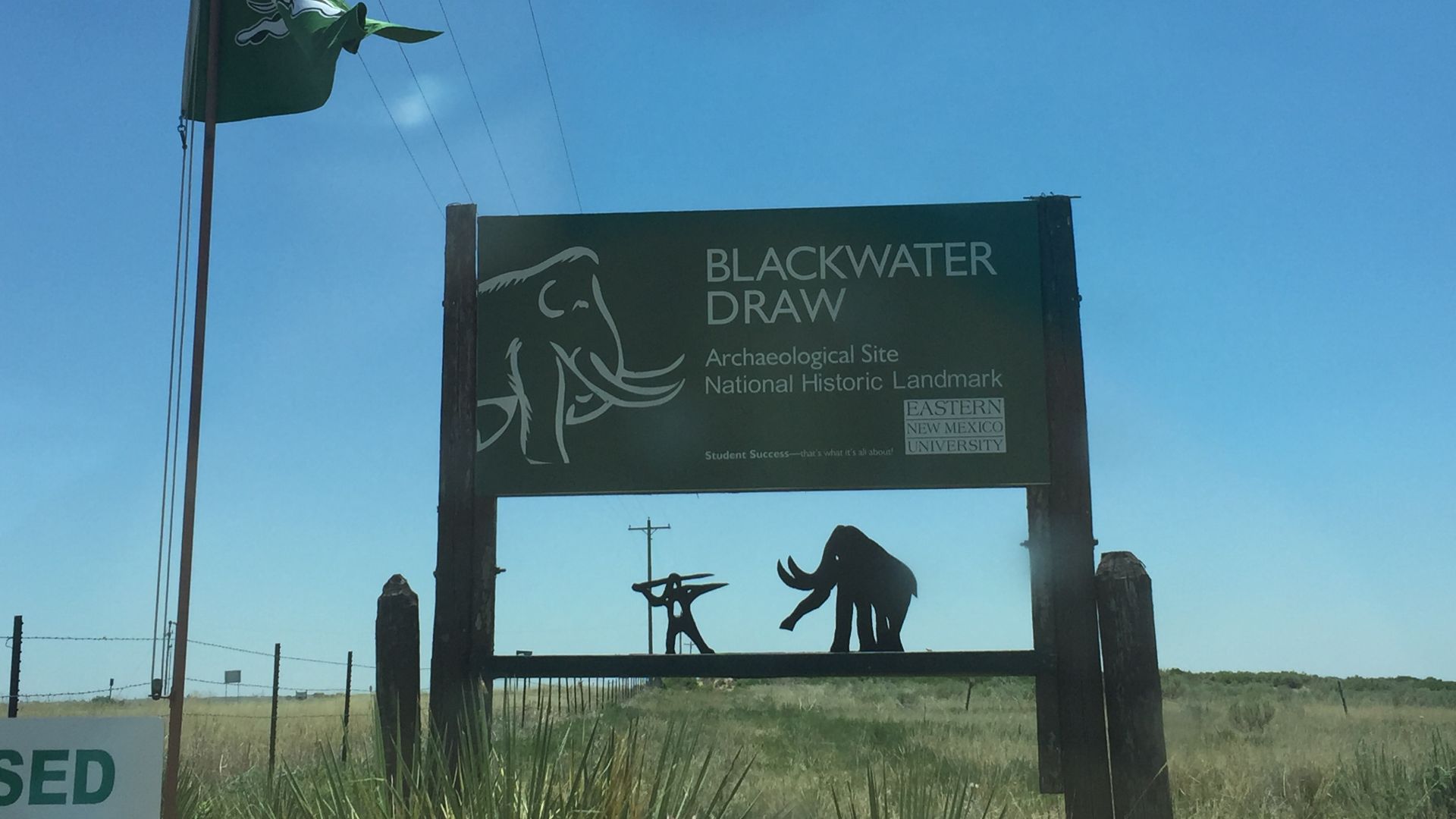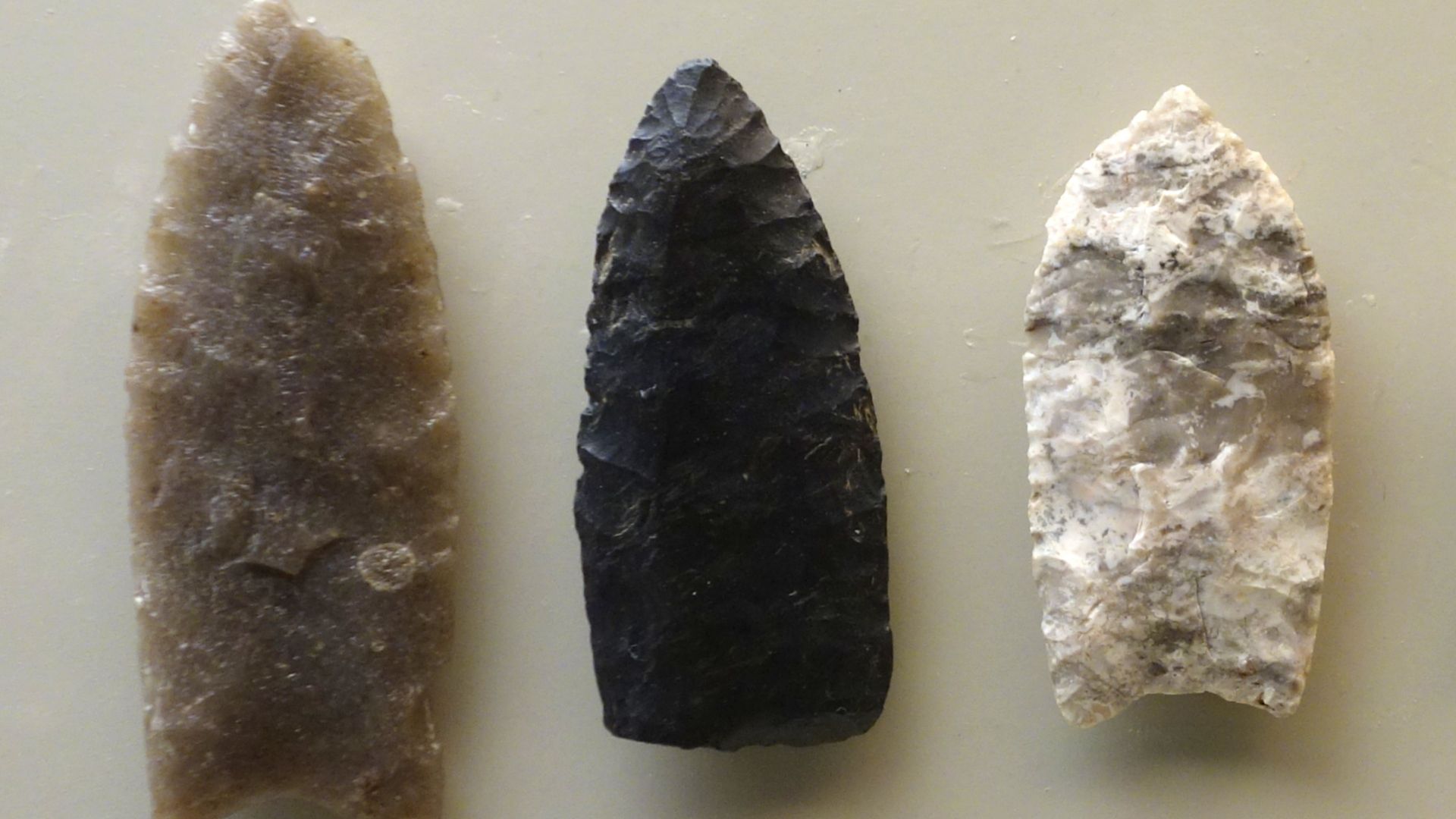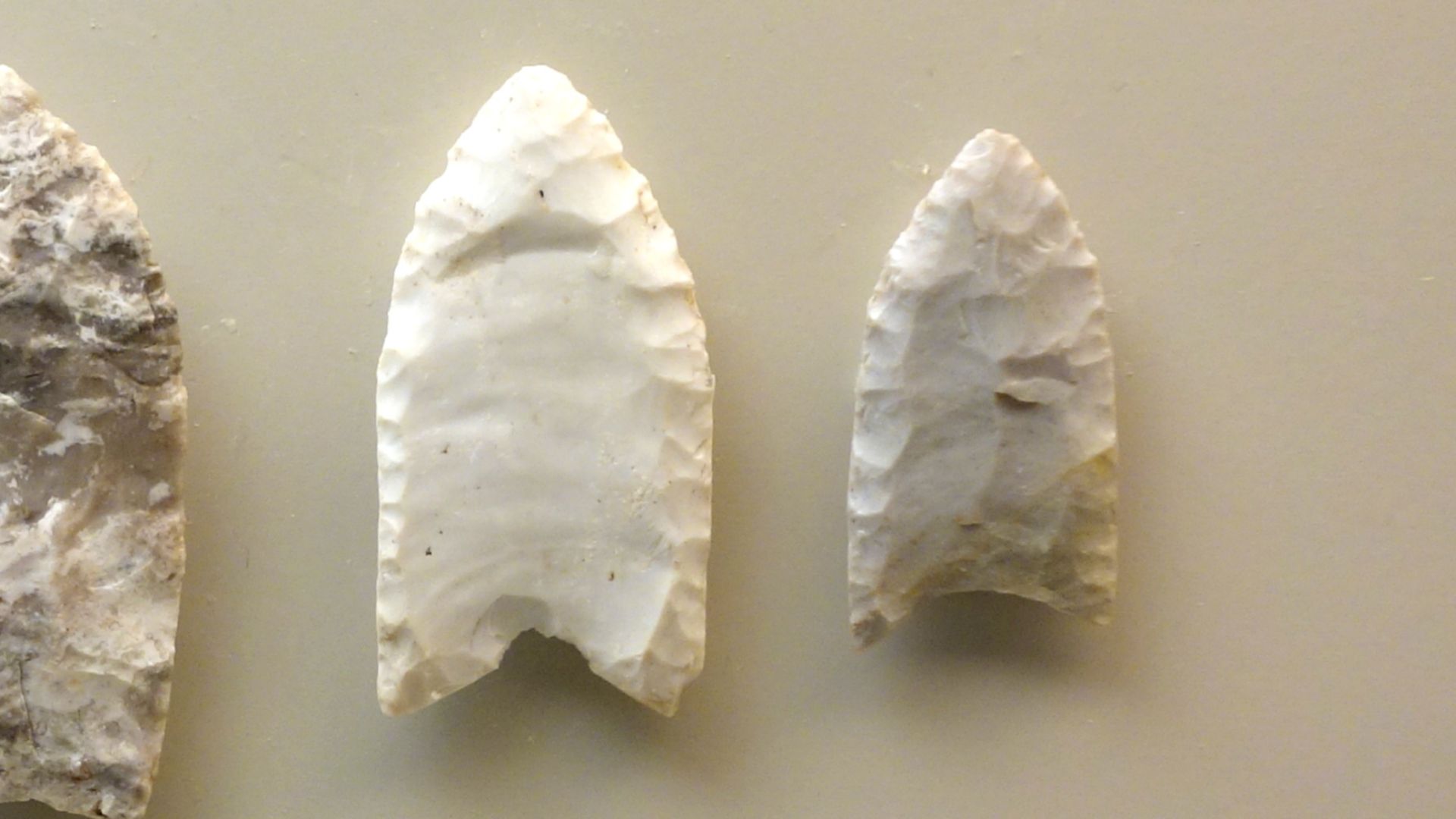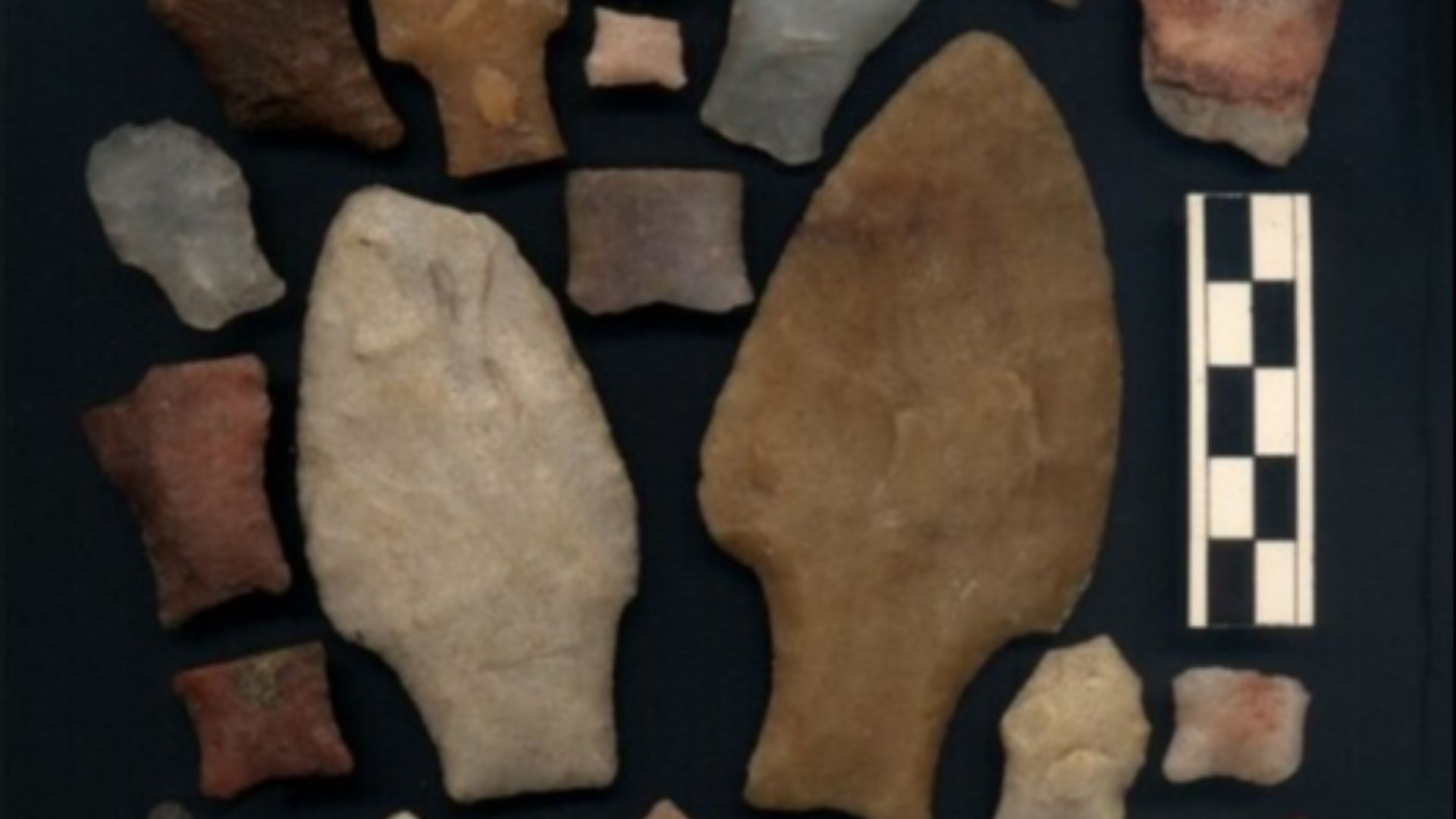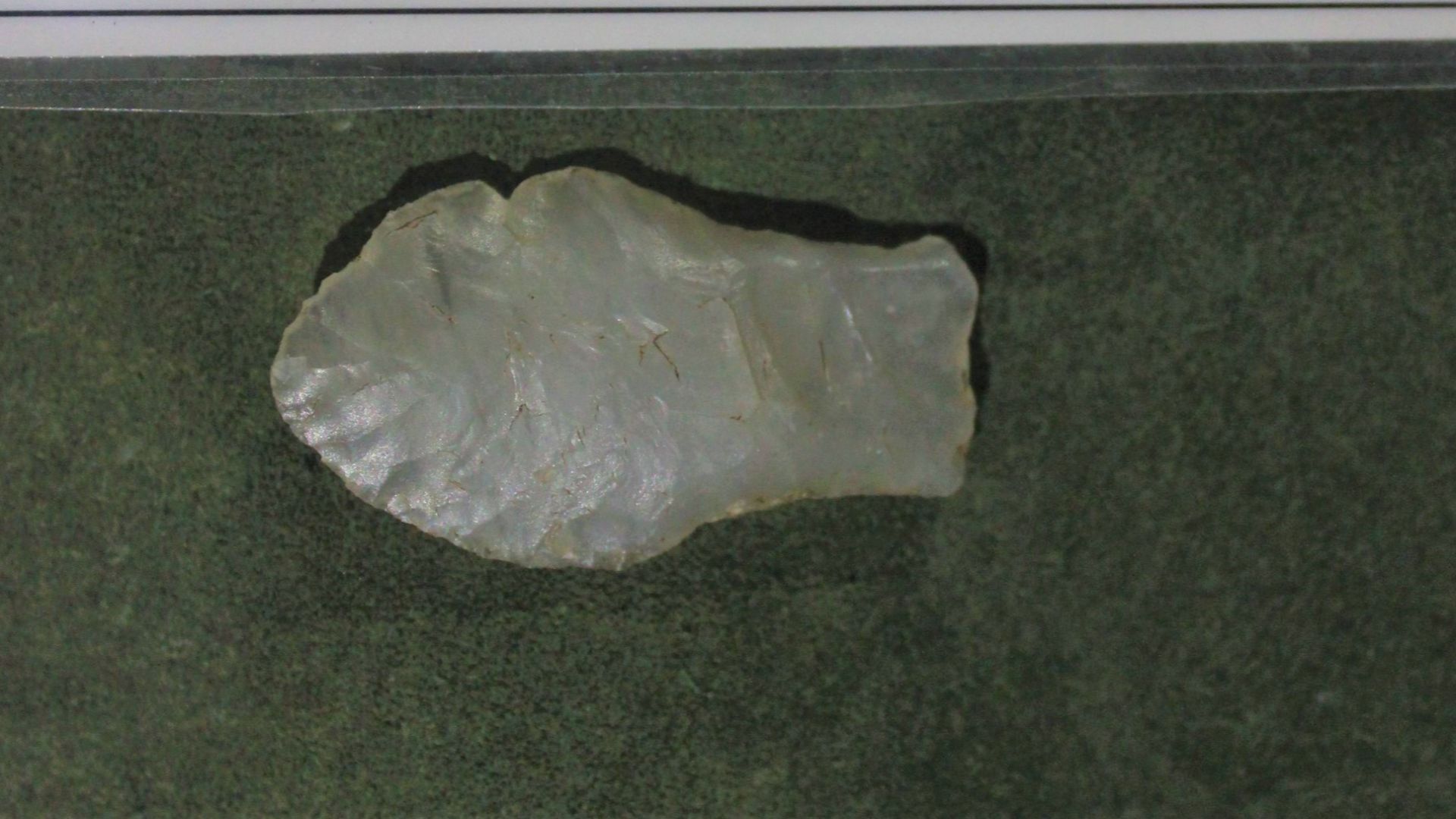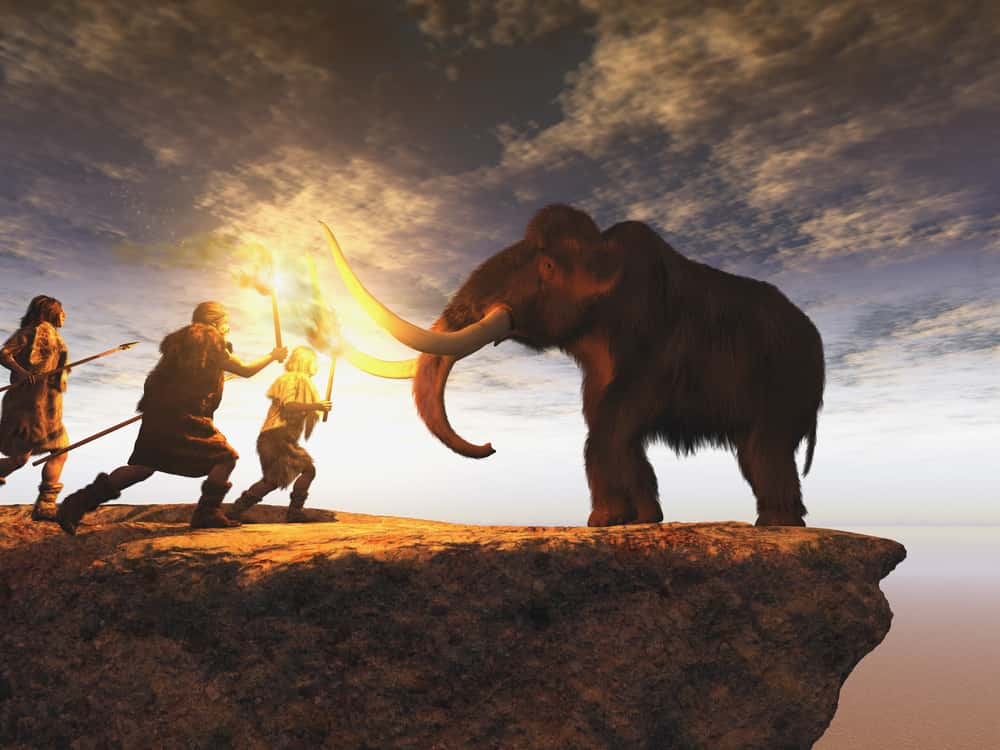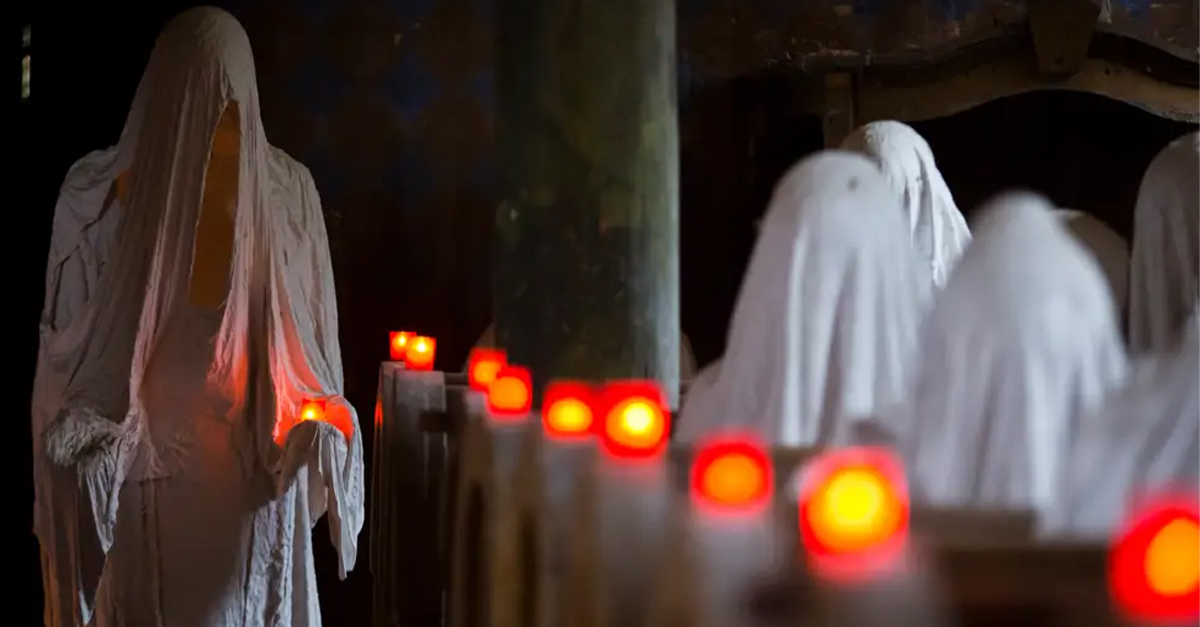Earliest Known Americans
The Clovis people, know for their distinctive fluted stone tools, flourished in North America, primarily in areas that are now the United States, and in parts of northern Mexico. Then approximately 12,900 years ago, they disappeared from the archaeological record.
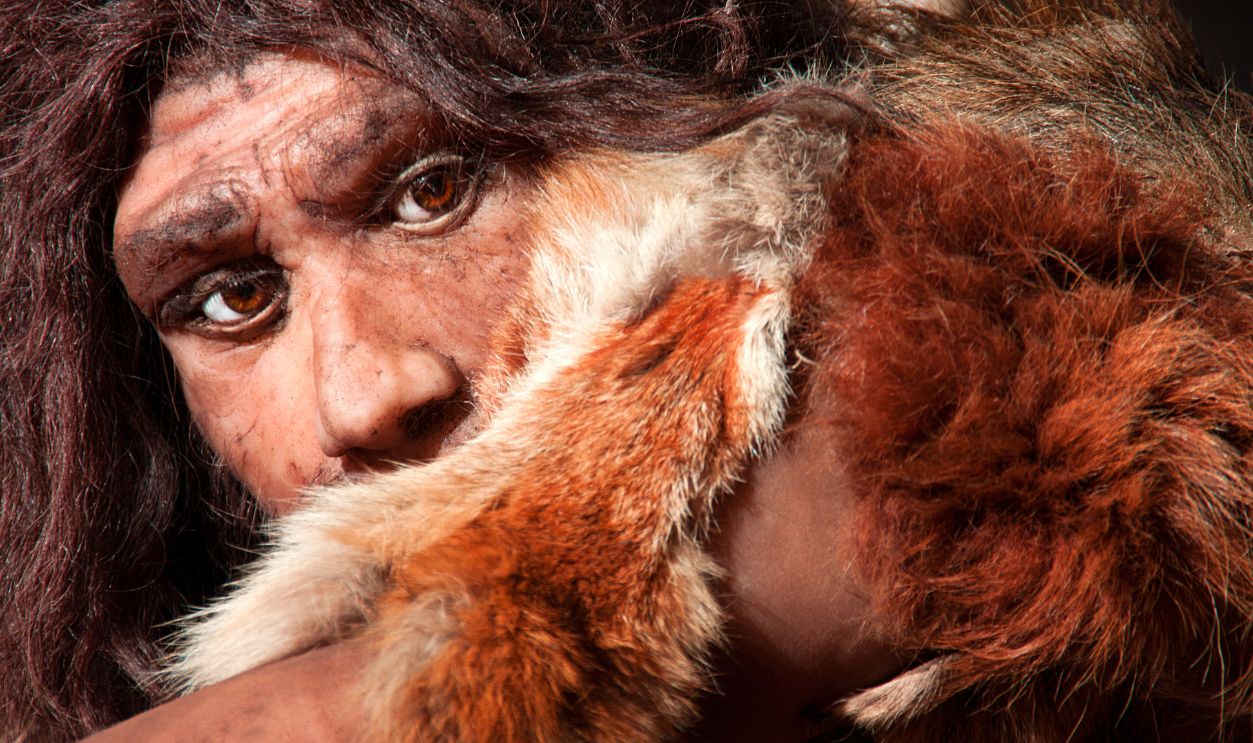
Temporal Range
The Clovis culture flourished during the Paleoindian period, which lasted from about 13,050 to 12,750 years ago (around 11,100–10,800 BC). These hunter-gatherers were the first major archaeological group we recognize in North America, popping up as the Pleistocene era came to an end.
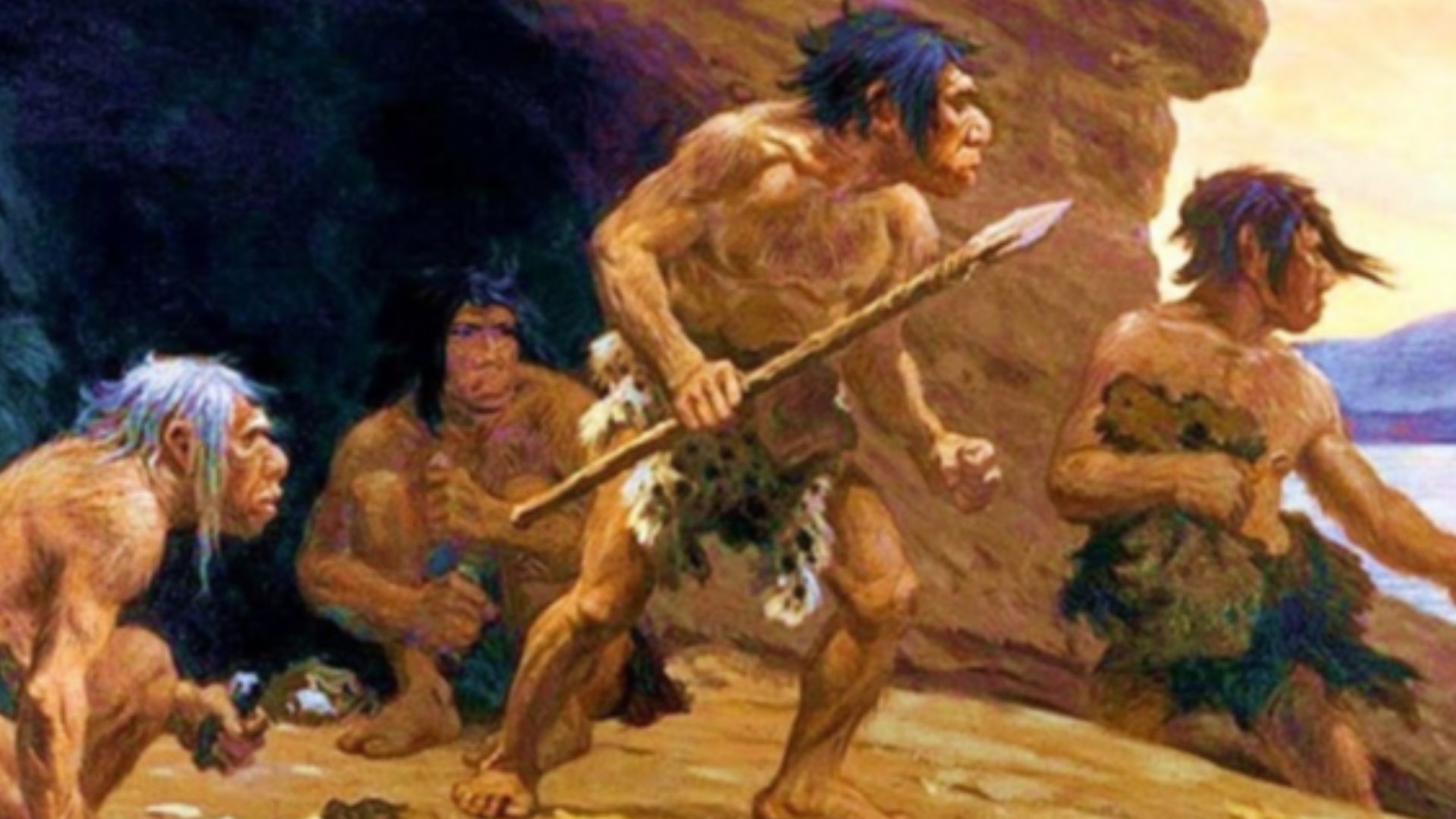 Charles Robert Knight, Wikimedia Commons
Charles Robert Knight, Wikimedia Commons
Paleoindian Era
Paleoindians are believed to have migrated from Asia via the Bering Land Bridge (Beringia) during periods of lower sea levels caused by glaciation. This migration likely occurred in multiple waves, with some groups possibly following a coastal route along the Pacific.
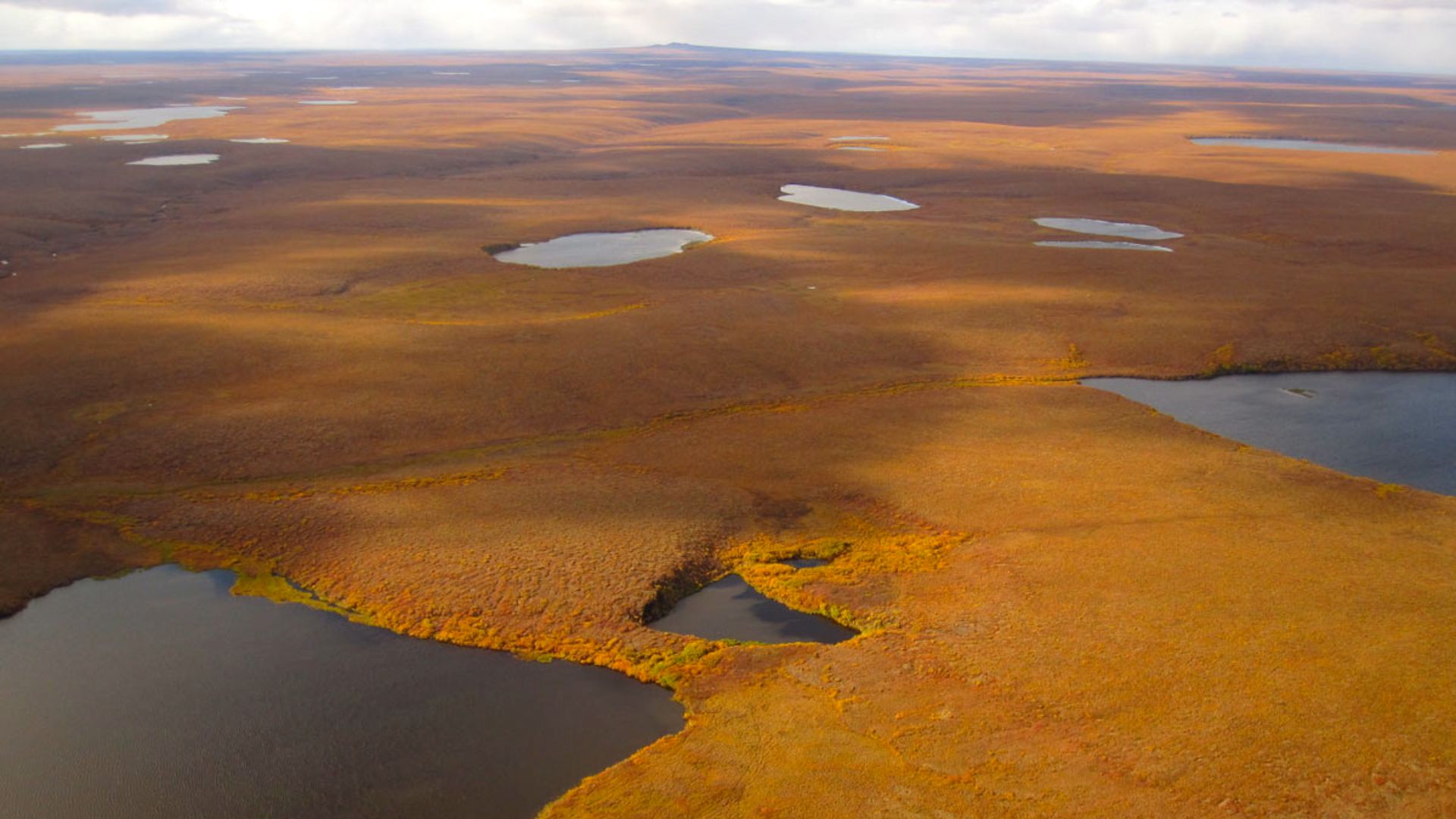 Bering Land Bridge National Preserve, Wikimedia Commons
Bering Land Bridge National Preserve, Wikimedia Commons
Discovery Context
As per reports, the first evidence of Pleistocene humans in America was found near Folsom in 1927. Two years later, 19-year-old Ridgely Whiteman discovered the Clovis site near Blackwater Draw, New Mexico. Here, stone tools were lying alongside Columbian mammoth remains.
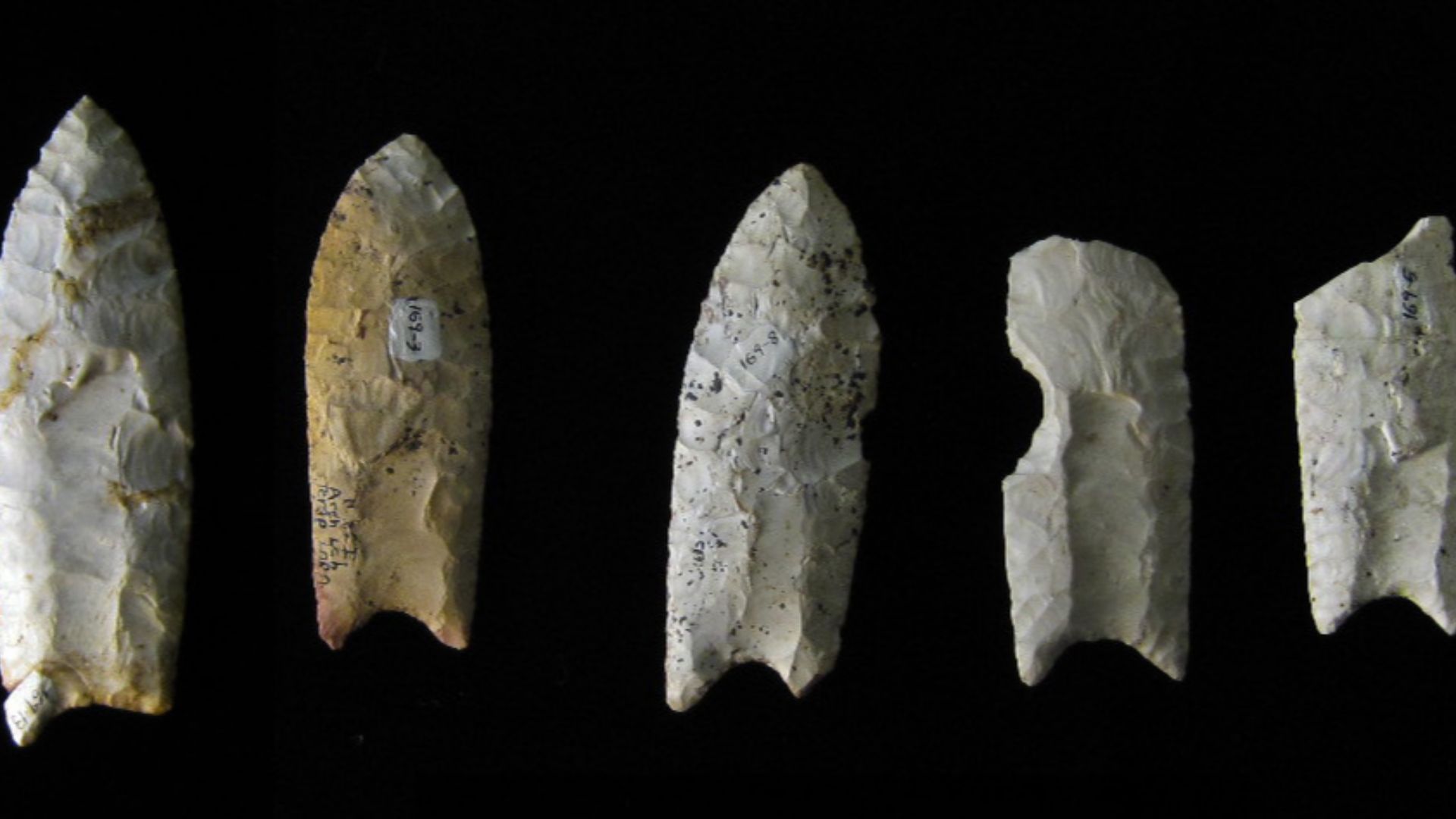 Bill Whittaker (talk), Wikimedia Commons
Bill Whittaker (talk), Wikimedia Commons
Professional Excavation
Scientific digs at these sites began between 1932 and 1937, starting with Edgar Billings Howard and later picked up by John L Cotter from the University of Pennsylvania. Their work at Blackwater Draw truly helped to establish the groundwork for understanding this ancient heritage.
Mammoths And Megafauna
The Dent site in Colorado was where the first real connection between Clovis points and mammoth bones was found. Hannah Marie Wormington noted this critical discovery, which confirmed that these early Americans hunted now-extinct Pleistocene megafauna like mammoths and mastodons.
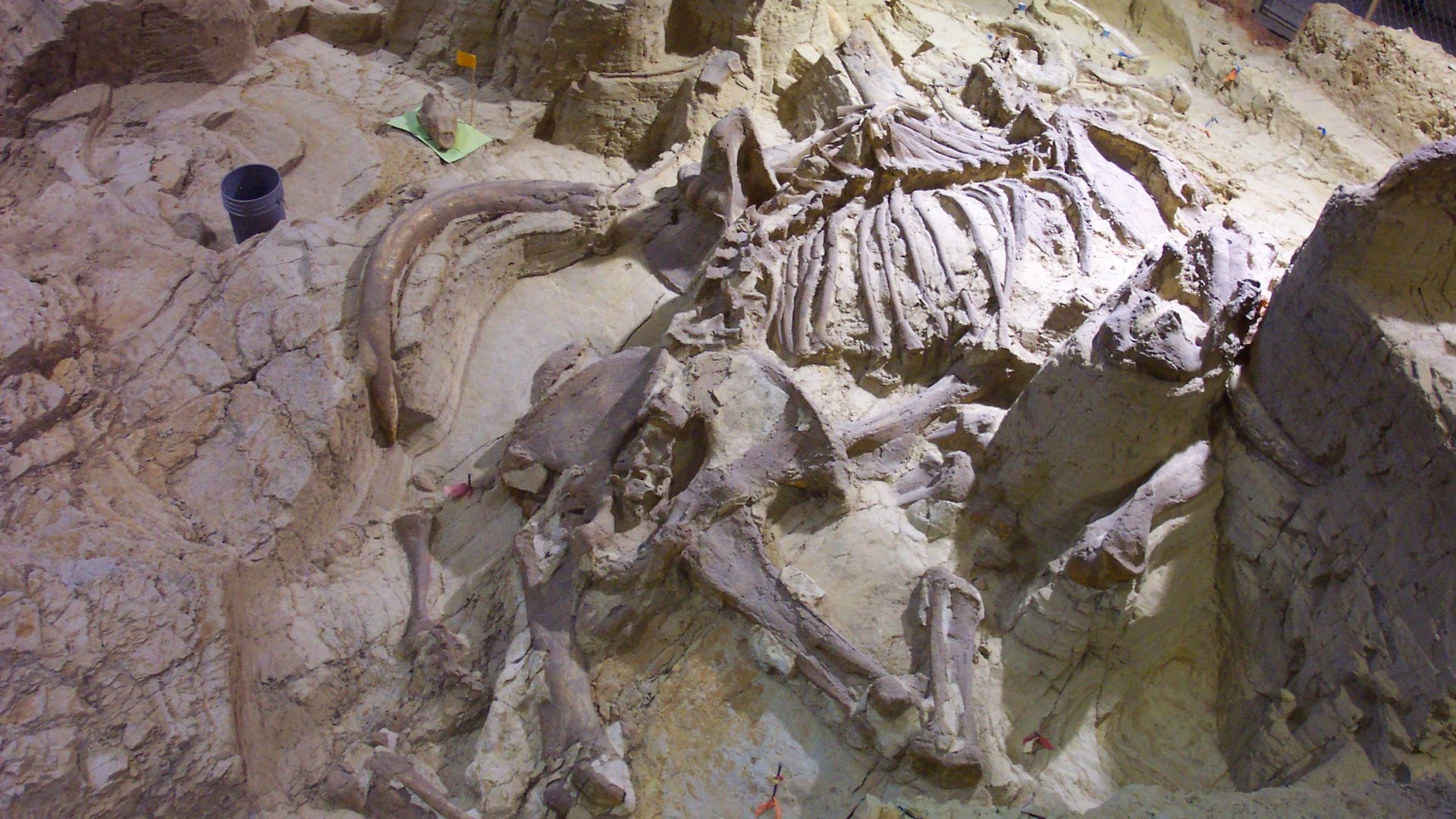 Jeff the quiet, Wikimedia Commons
Jeff the quiet, Wikimedia Commons
Continental Distribution
Clovis areas can be found in various environments all over North America. The stone used for tools has been located hundreds of kilometers from where it originally came from, proving that these highly mobile groups were often on the move, possibly trading or traveling extensively.
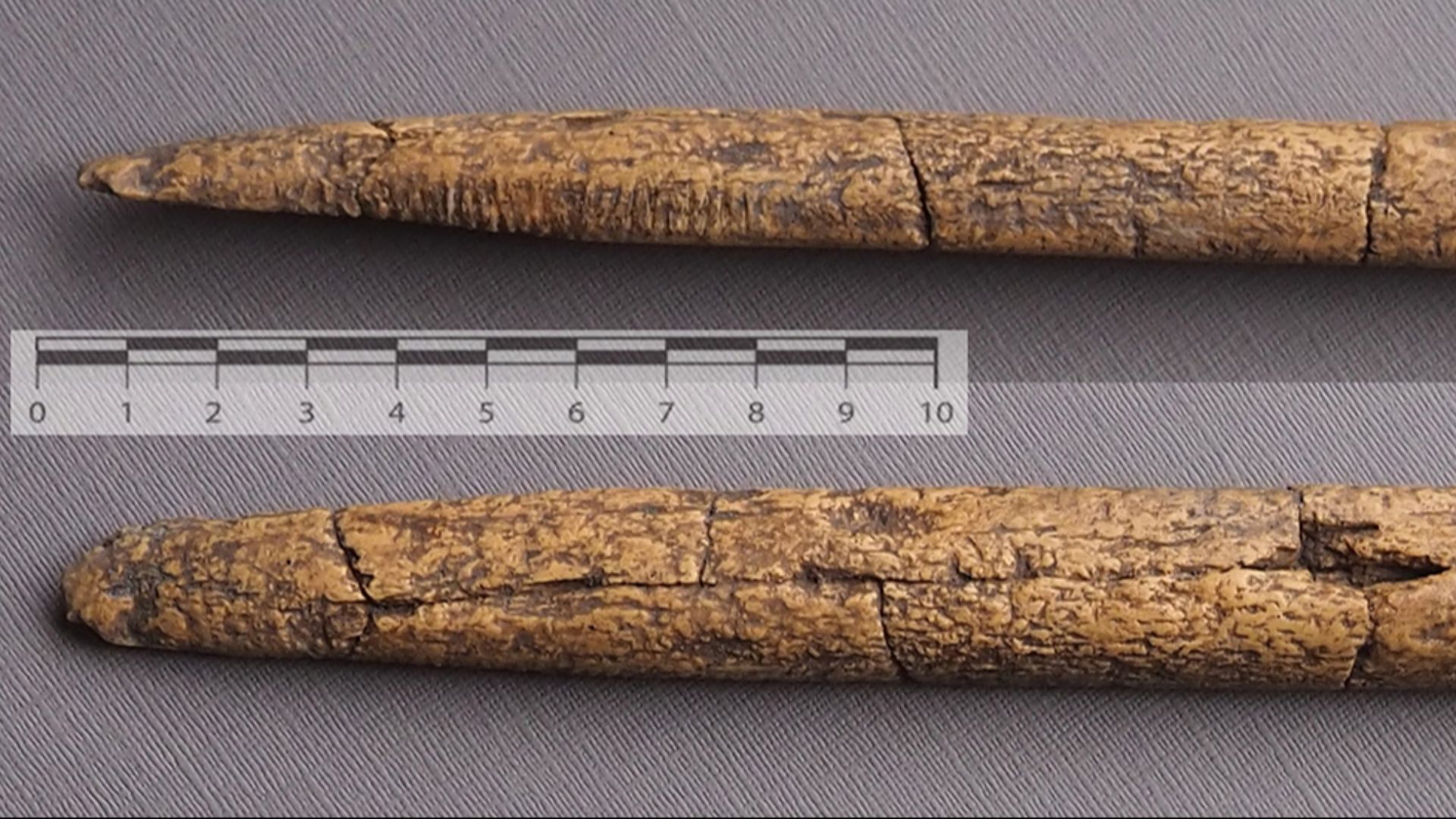 R. Scott Byram ,Kent G. Lightfoot,Jun Ueno Sunseri, Wikimedia Commons
R. Scott Byram ,Kent G. Lightfoot,Jun Ueno Sunseri, Wikimedia Commons
Signature Projectile Points
Well, the defining technology is their distinctive projectile points. These include bifacial, fluted stone tips with parallel or slightly convex sides and concave bases. Such large points, sometimes exceeding 10 centimeters, possess characteristic fluting extending one-third up from the base.
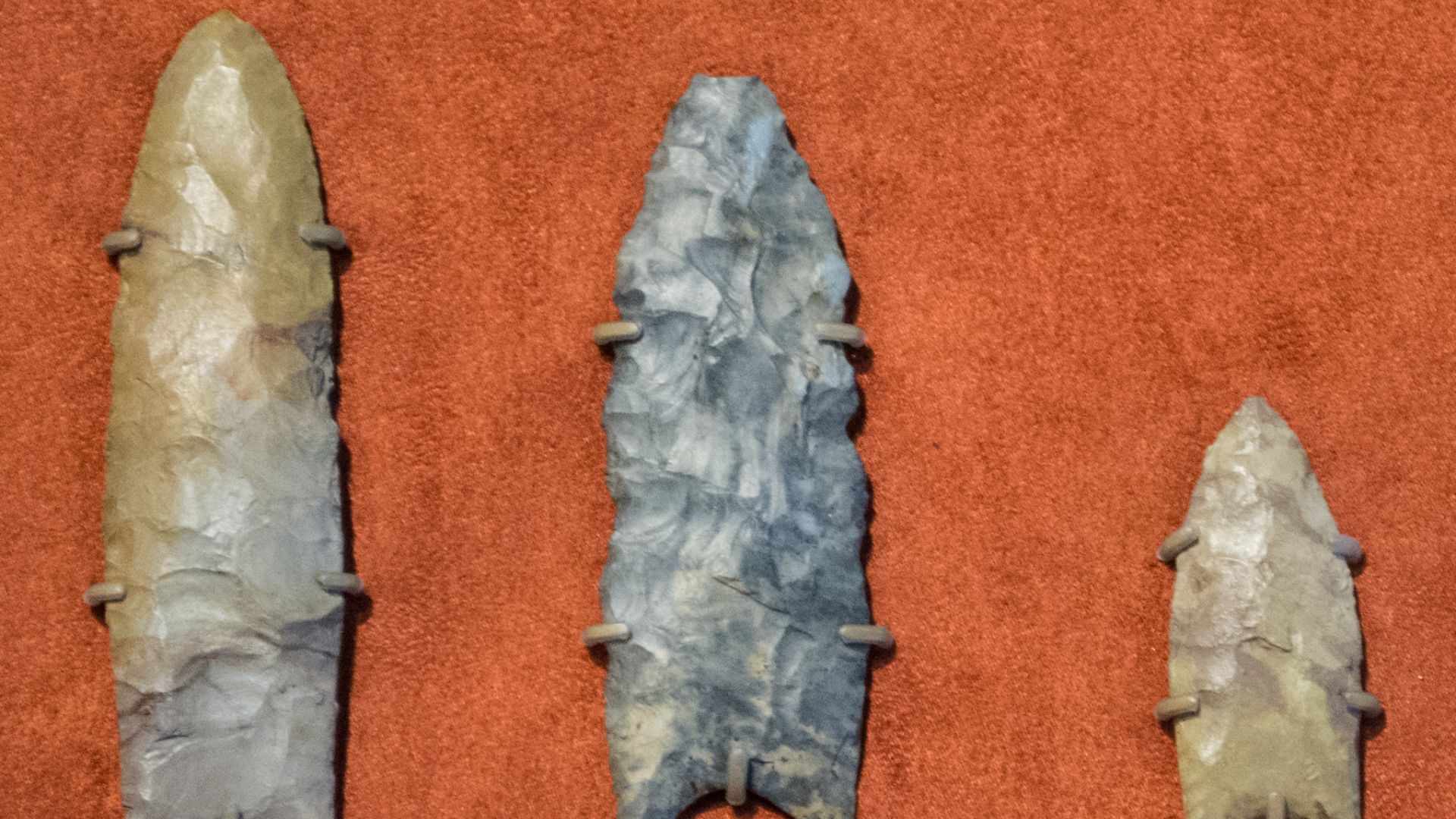 Tim Evanson from Cleveland Heights, Ohio, USA, Wikimedia Commons
Tim Evanson from Cleveland Heights, Ohio, USA, Wikimedia Commons
Advanced Manufacturing
Toolmakers employed sophisticated knapping sequences, beginning with percussion flaking and finishing with precise pressure flaking. Their overshot technique removed flakes that traveled across bifaces, sometimes past the midline. This required exceptional skill, with points often breaking during the rigid fluting stage.
Multipurpose Tools
According to Wear pattern studies by researchers Mika and colleagues (2022), Clovis points served multiple functions beyond hunting, such as cutting implements and processing tools. The fluting may have prevented breakage, strengthened attachment to spear hafts, or absorbed impact shock during use.
Comprehensive Toolkit
The Clovis toolkit had more than just projectile points. It included specialized tools like bifaces, knives, scrapers, and blades. They made tools from bone, such as shaft wrenches and beveled rods, and might have used ivory points, too. All these tools aided their nomadic hunting lifestyle.
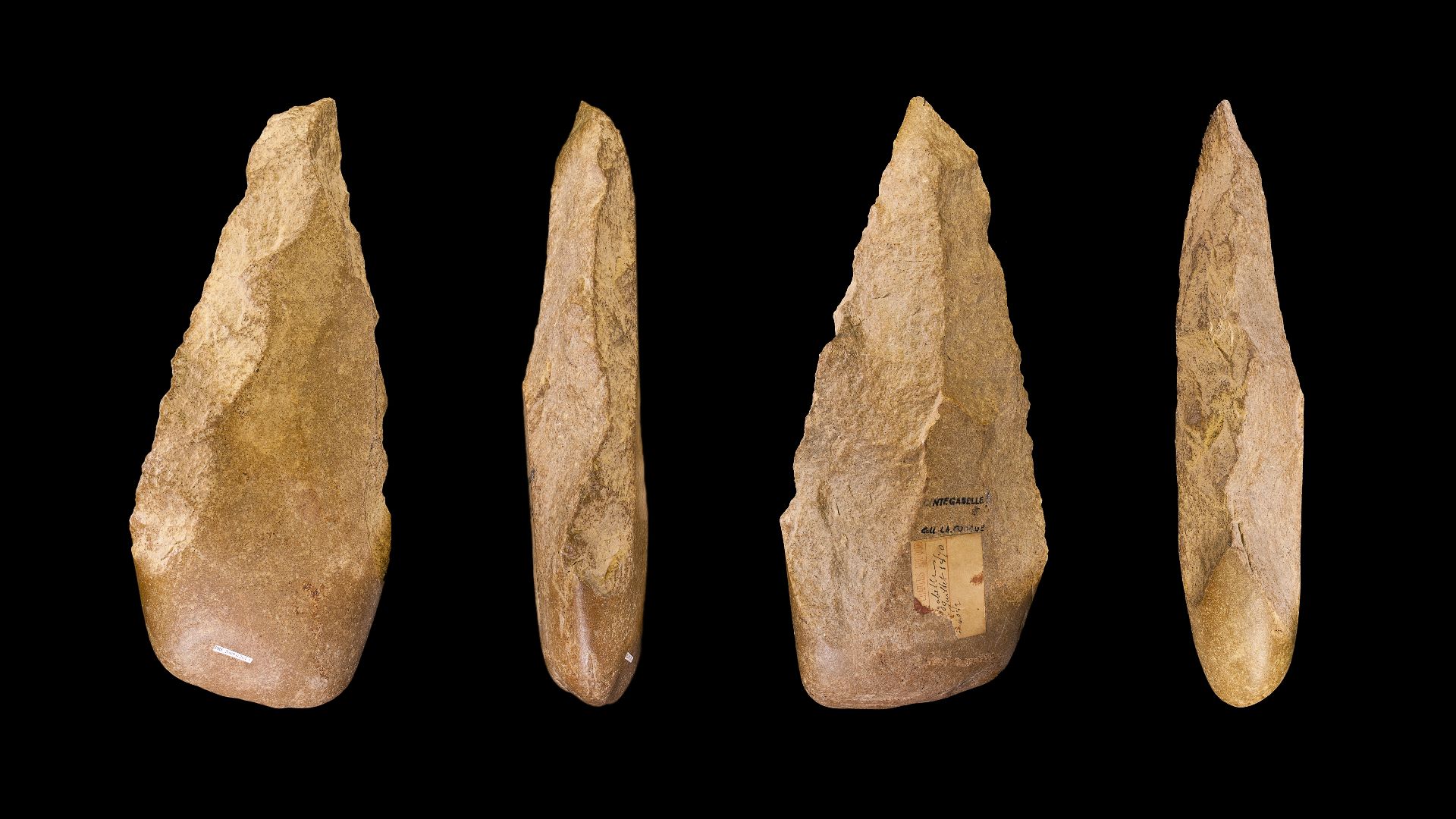 Archaeodontosaurus, Wikimedia Commons
Archaeodontosaurus, Wikimedia Commons
Strategic Caching
One characteristic of the culture was the creation of "caches"—groups of useful implements and supplies that were purposefully kept in particular places. North America has seen the discovery of more than 20 such caches. This indicates deliberate travel patterns and resource management mechanisms.
Smart Hunting
Additionally, Clovis hunters had some clever strategies for hunting big animals. At Jake Bluff in Oklahoma, there’s proof that they managed to trap bison herds in steep canyons before taking them down. Looks like they genuinely understood animal behavior and knew their way around the land.
 PD-USGov-Interior-FWS, Wikimedia Commons
PD-USGov-Interior-FWS, Wikimedia Commons
Diet Composition
Despite being known for hunting megafauna, mammoths may have made up 35–40% of their diet, according to isotopic research of the Anzick-1 burial. By the way, they also ate smaller animals, bison, and elk, indicating a varied subsistence strategy in various settings.
 Mauricio Antón, Wikimedia Commons
Mauricio Antón, Wikimedia Commons
Material Selection
For their tools, toolmakers chose premium cryptocrystalline rocks with care. Their advanced understanding of lithic resources was highlighted when they transported raw materials or completed tools across great distances. This was done due to their affinity for certain types of stone.
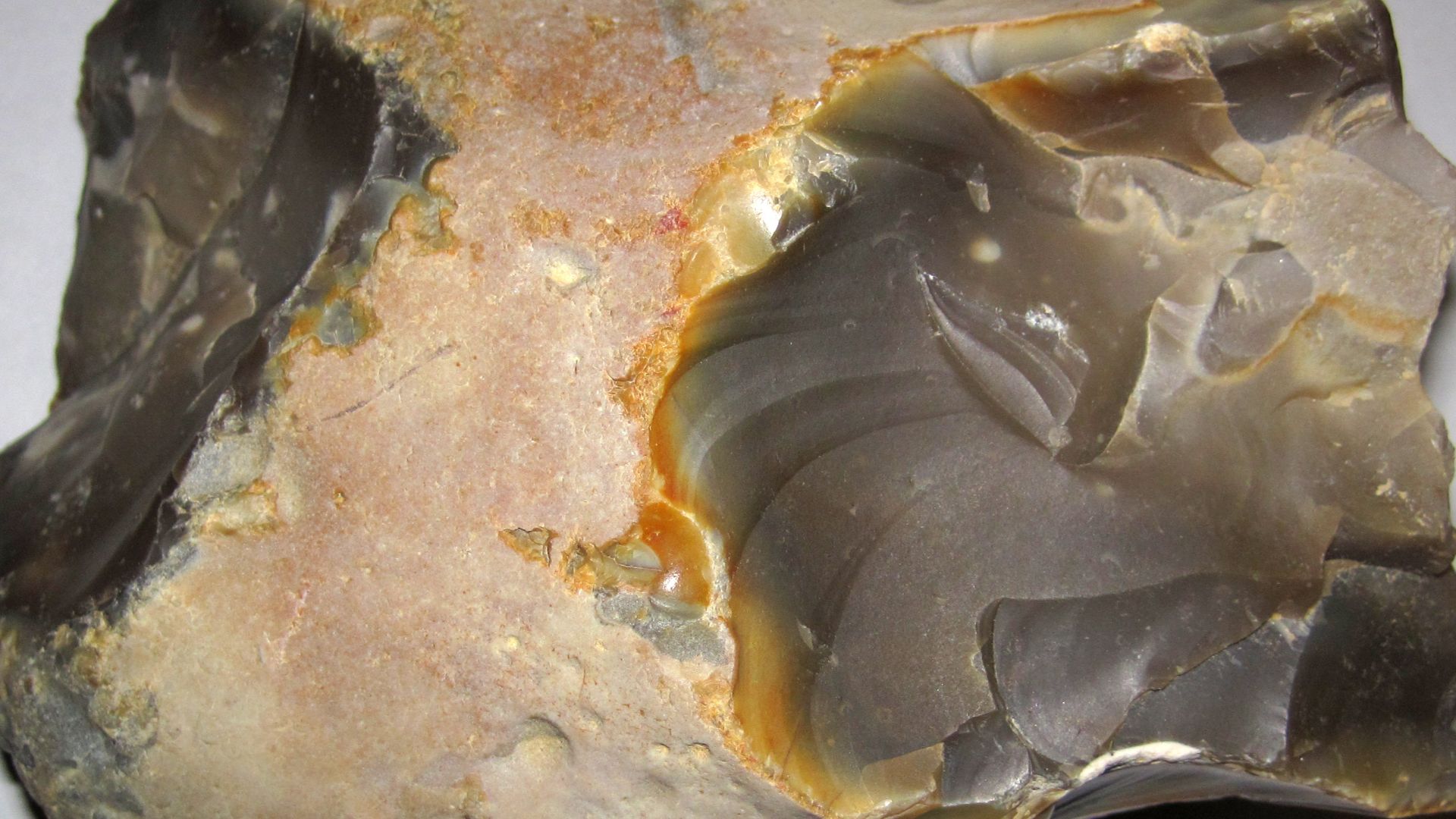 James St. John, Wikimedia Commons
James St. John, Wikimedia Commons
Southeastern Settlements
In the Southeast, Clovis people set up large camps that probably served as gathering spots for various groups. These "staging areas" might have made it easier for them to socialize, share information, and work together while hunting, even though they were otherwise spread out.
Red Ochre Usage
Red ochre was prized by these individuals, who would carry it up to 100 kilometers from its source outcrops. This mineral's artistic and ceremonial uses, such as coating cache and burial objects, point to symbolic thinking. Yes, it goes beyond basic survival necessities.
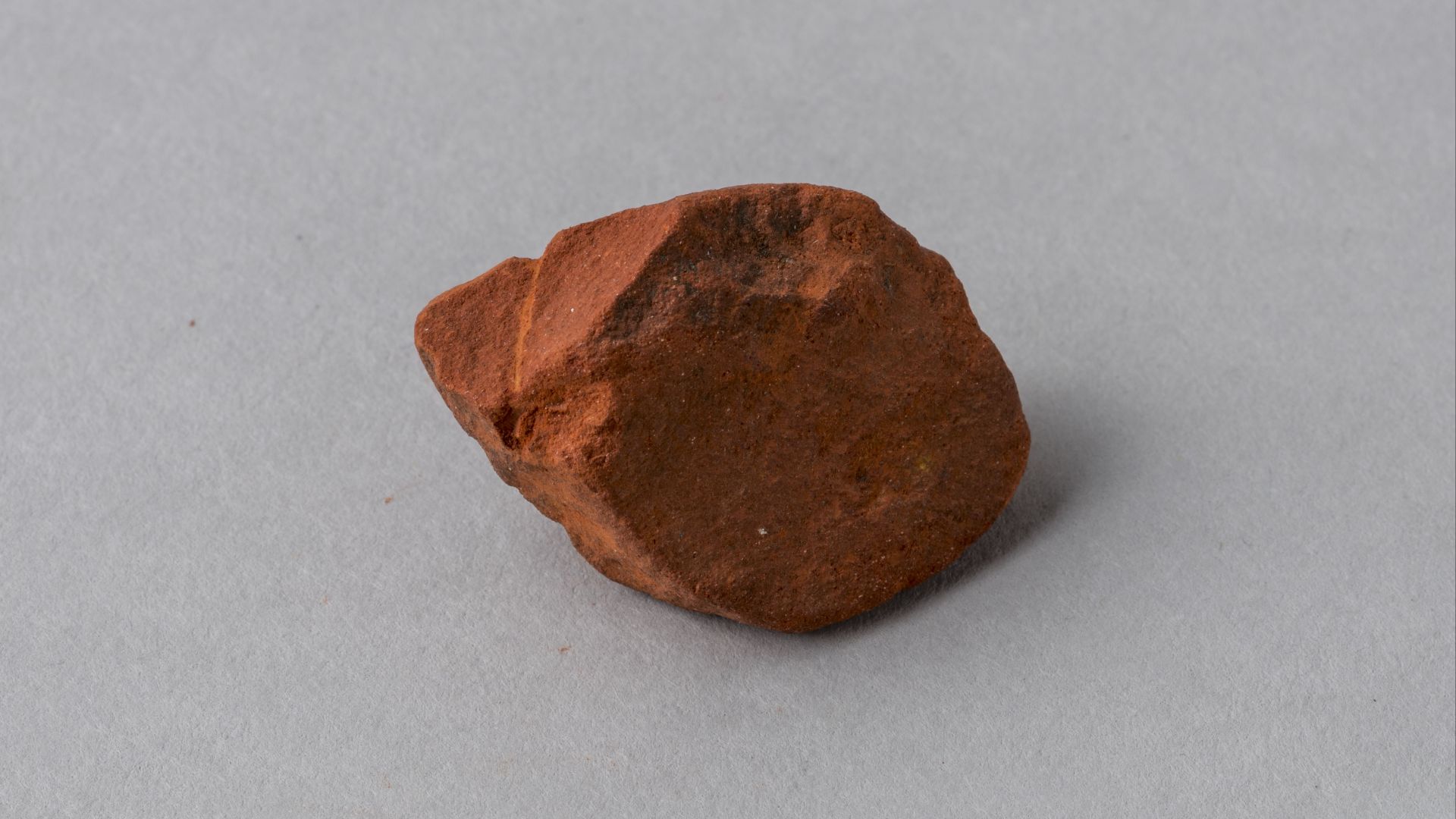 Marco Chemello (WMIT), Wikimedia Commons
Marco Chemello (WMIT), Wikimedia Commons
Artistic Expression
Evidence of this culture's creative expression includes engraved limestone nodules spotted at the Gault Site in Texas. These nodules, dating to approximately 11,200 BP, have geometric patterns such as straight lines, grids, and diamond-shaped motifs. Some designs resemble plant-like images or animals.
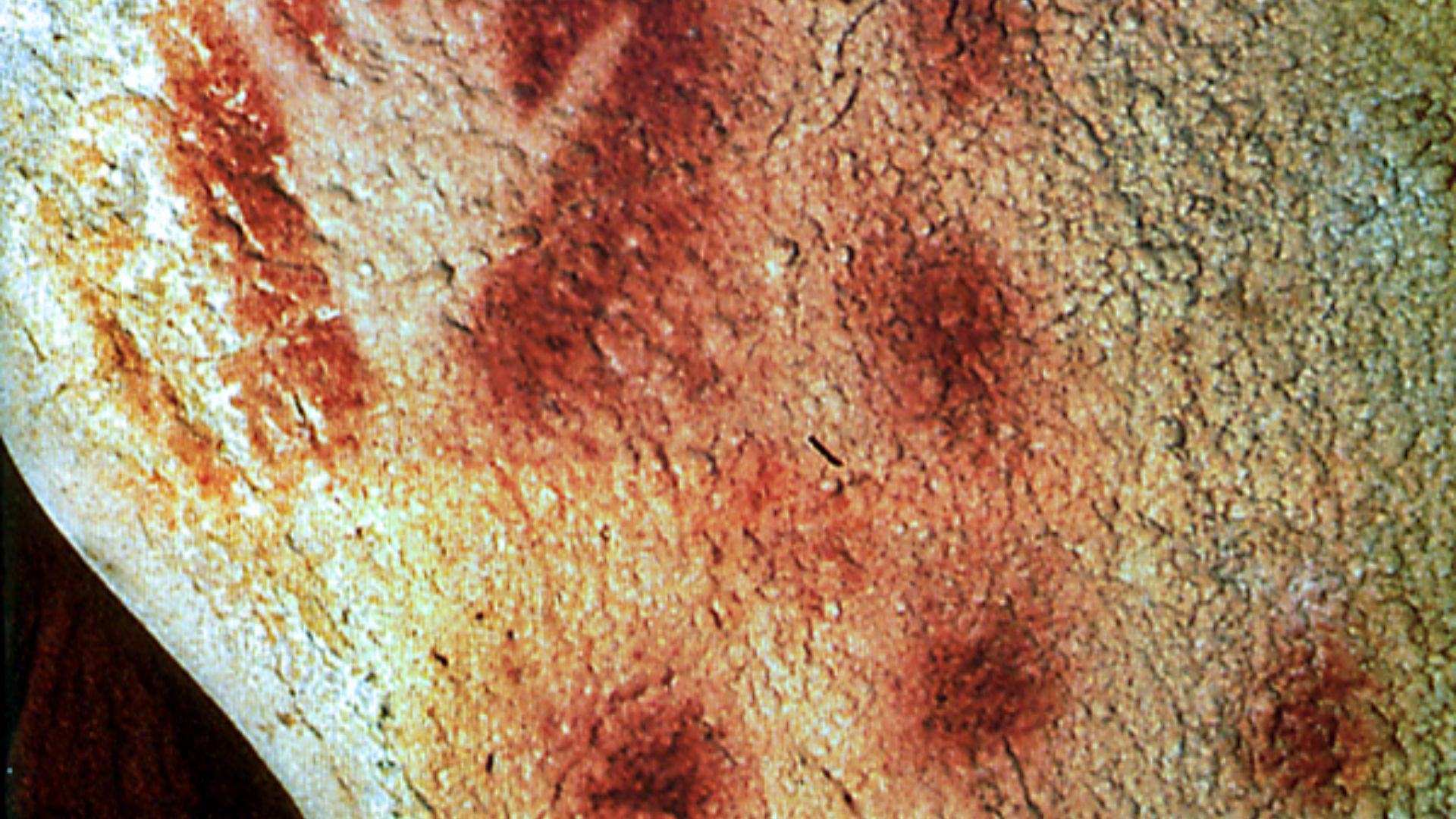 Locutus Borg, Wikimedia Commons
Locutus Borg, Wikimedia Commons
Ancient Adornment
Recent findings at the La Prele Mammoth site in Wyoming have uncovered an intriguing tubular bone bead that's about 12,940 years old. This makes it the oldest bead ever found in the Americas. The bead is around 7 mm long.
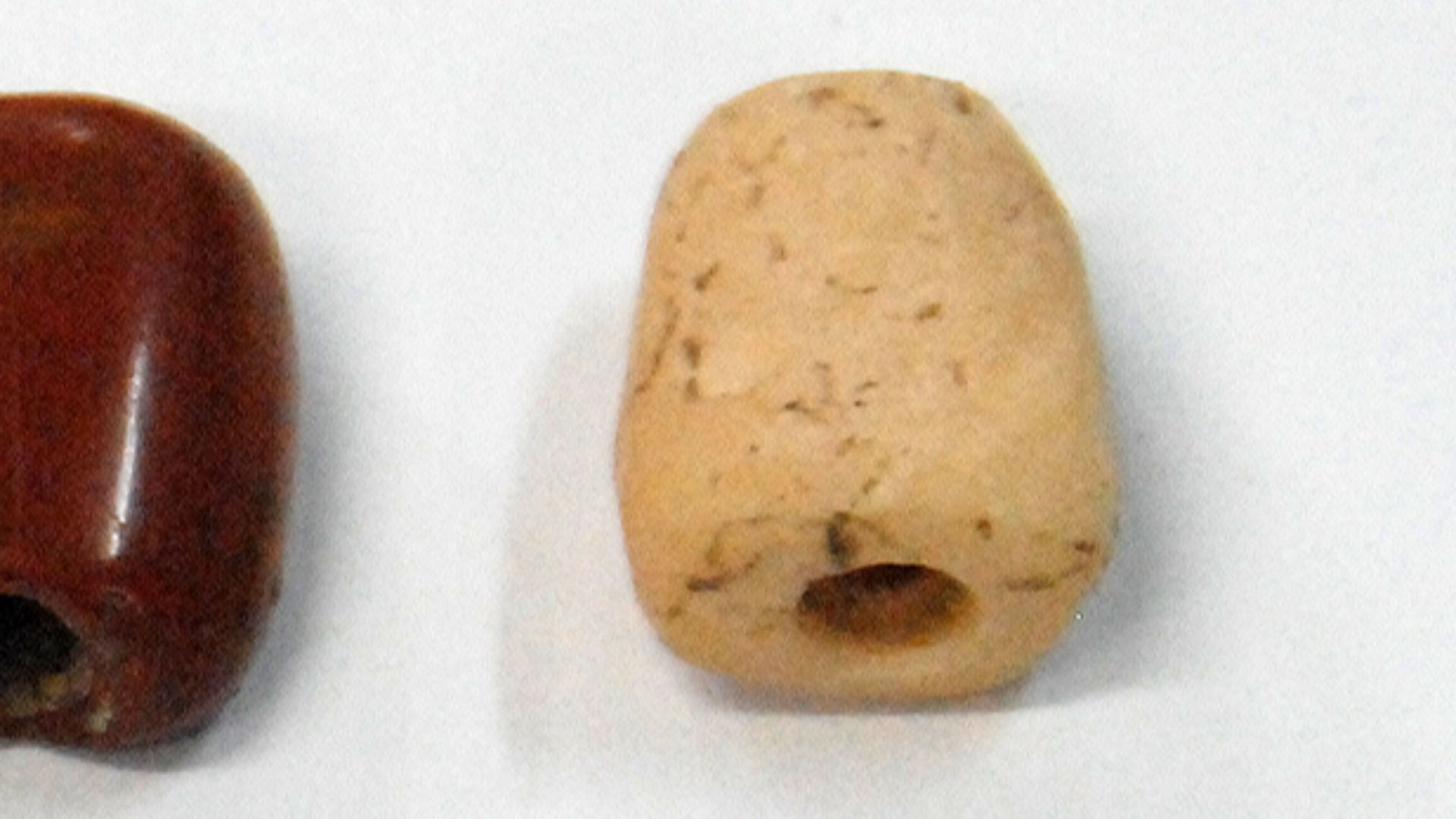 Patrick Nunn, Wikimedia Commons
Patrick Nunn, Wikimedia Commons
Hare Bone Artistry
It is made from the bone of a hare (Lepus sp.) and has polished ends and grooves that show it was made by humans. The bead’s reddish tint probably comes from the iron oxide-rich soil in the area. Such ornaments might have worked as markers of identity.
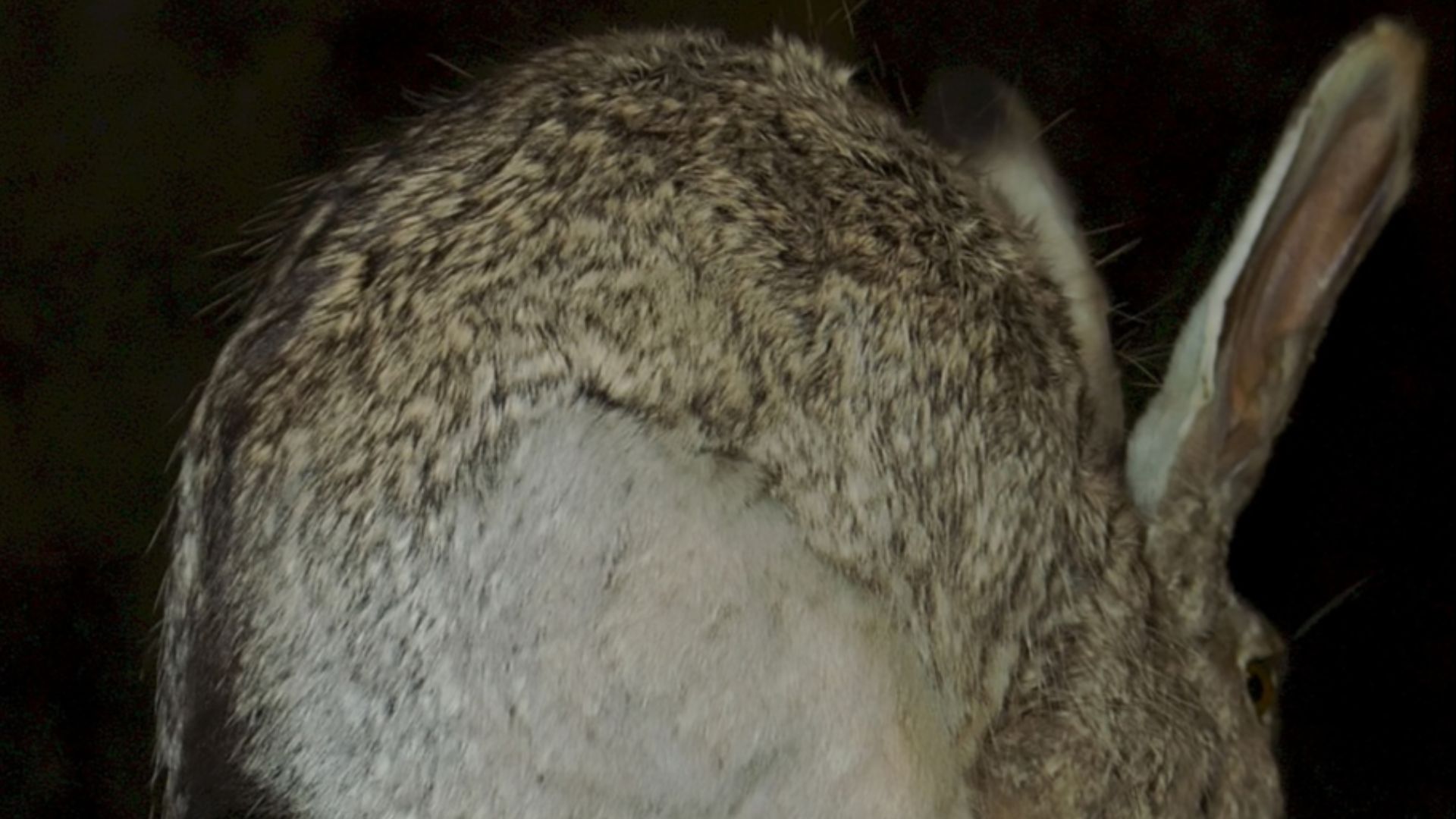 Photo by David J. Stang, Wikimedia Commons
Photo by David J. Stang, Wikimedia Commons
Fur Processing
So, the needles, crafted from the bones of species such as jackrabbits, red foxes, bobcats, and possibly cougars, suggest that these animals were exploited for their pelts. The use of these specific species point out to a strategic approach to fur working during the Ice Age.
Anzick Child Burial
The Anzick site near Wilsall, Montana, located in 1968, represents the only known Clovis burial and provides critical insights into the mortuary practices of this bygone society. The burial contained the skeletal remains of a young boy, referred to as Anzick-1.
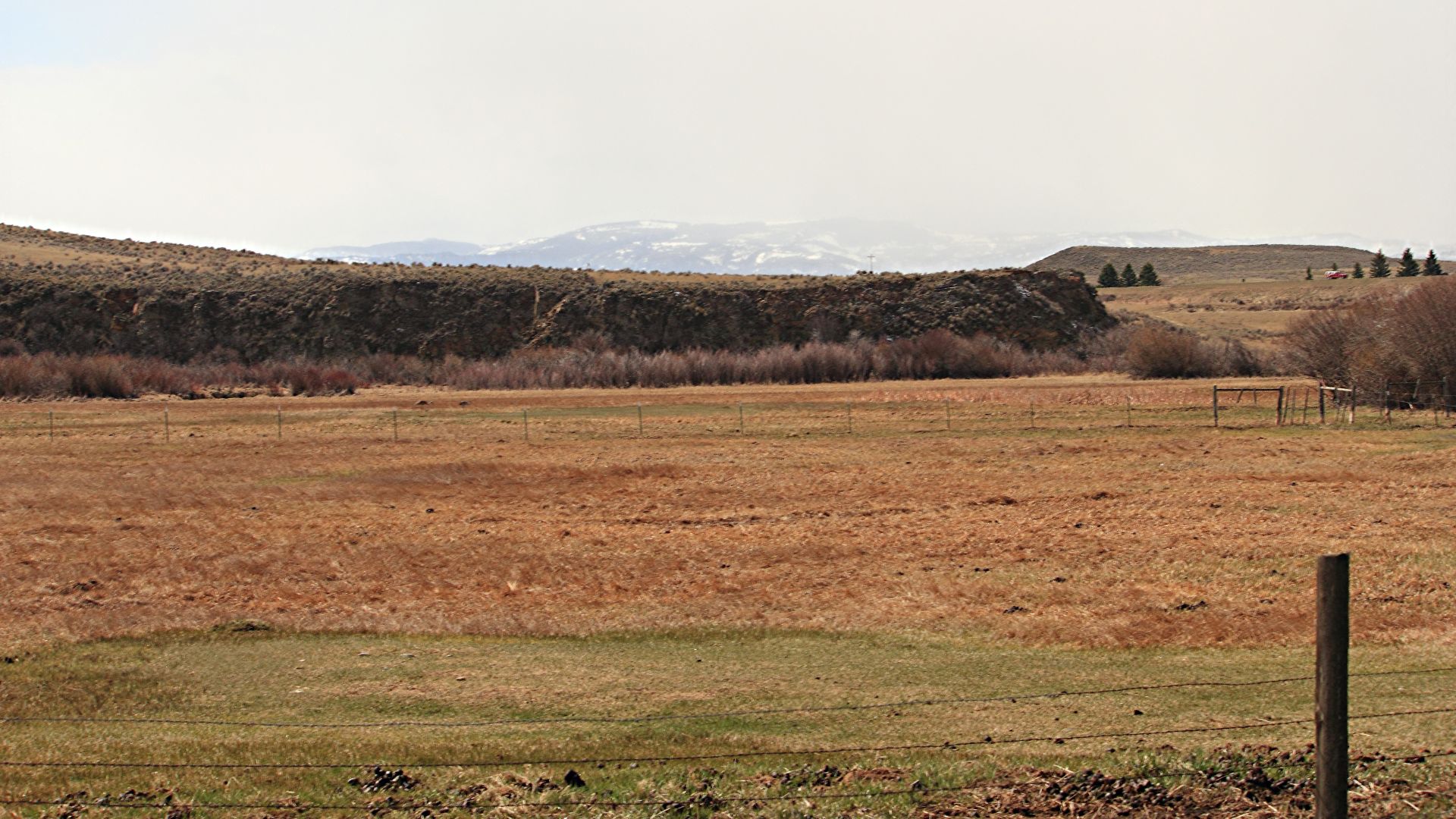 Ronald L. Shimek, Ph. D., Wikimedia Commons
Ronald L. Shimek, Ph. D., Wikimedia Commons
Anzick Child Burial (Cont.)
He was around 1 to 1.5 years old at the time of his death. Along with the remains, more than 100 stone and bone artifacts were found, all covered with red ochre. This is considered one of the earliest examples of ceremonial behavior in the Americas.
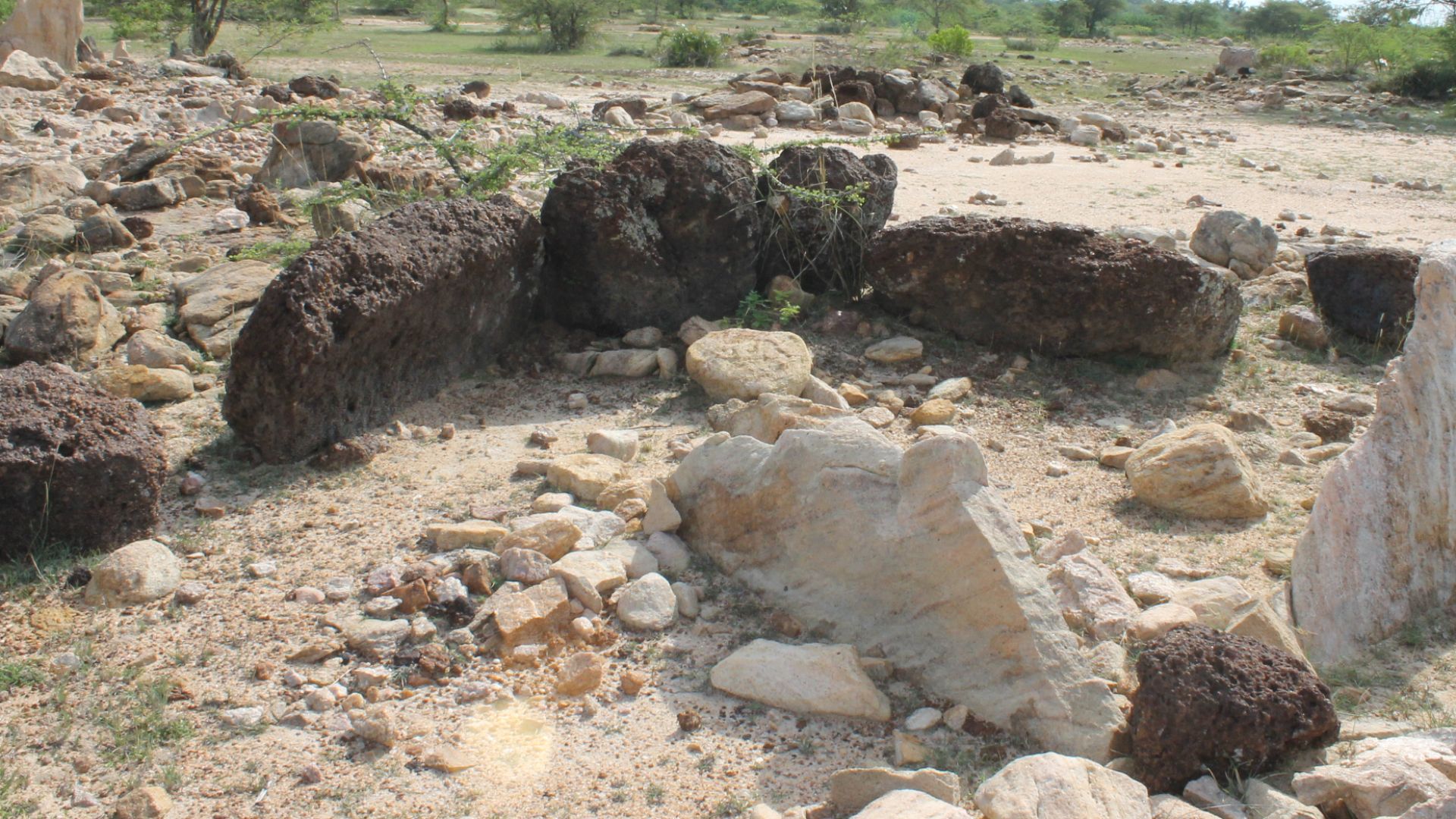 Thamizhpparithi Maari, Wikimedia Commons
Thamizhpparithi Maari, Wikimedia Commons
Genetic Heritage
DNA analysis of the Anzick-1 remains, dated to approximately 12,990–12,840 years Before Present (BP), reveals significant genetic connections to contemporary Indigenous peoples of the Americas. The child belonged to Y-chromosome haplogroup Q-L54 and mitochondrial haplogroup D4h3a.
Genetic Heritage (Cont.)
Both of these are associated with Native American populations and confirm an Asian origin for these early inhabitants. Hence, radiocarbon dating and genetic data together place Anzick-1 firmly within the Clovis cultural period, around 12,900 to 12,700 calibrated years BP.
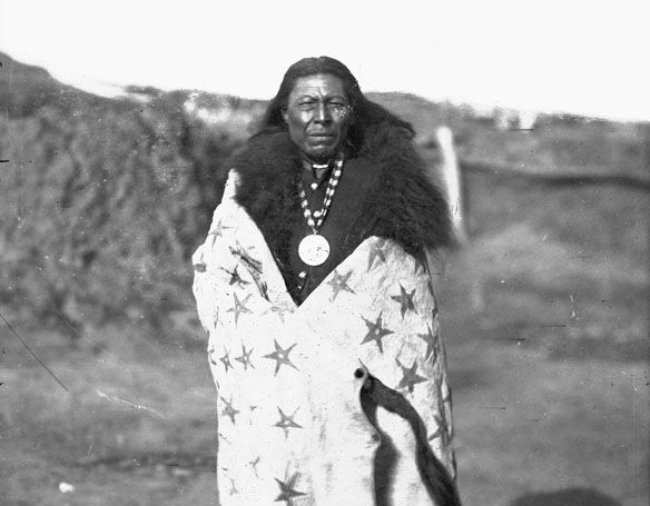 Unknown Artist, Wikimedia Commons
Unknown Artist, Wikimedia Commons
Contemporaneous Cultures
In western North America, the civilization coexisted with and may have been preceded by the Western Stemmed Tradition. This featured unfluted projectile points. Proof from Oregon's Paisley Caves shows that WST artifacts date to about 13,200 calendar years ago, overlapping with or predating the Clovis timeframe.
"Clovis First" Hypothesis
For much of the 20th century, the "Clovis First" paradigm dominated archaeological thinking. This theory mentioned that around 13,000 years ago, small groups of Siberian hunter-gatherers crossed the Bering land bridge during the last Ice Age.
 What's It Really Like To Live In An Ice Age? | Unveiled by Unveiled
What's It Really Like To Live In An Ice Age? | Unveiled by Unveiled
"Clovis First" Hypothesis (Cont.)
Then, they traveled through an ice-free corridor between the Cordilleran and Laurentide ice sheets and spread rapidly across North and South America. The theory relied on the existence of an ice-free corridor that allowed migration from Beringia into North America.
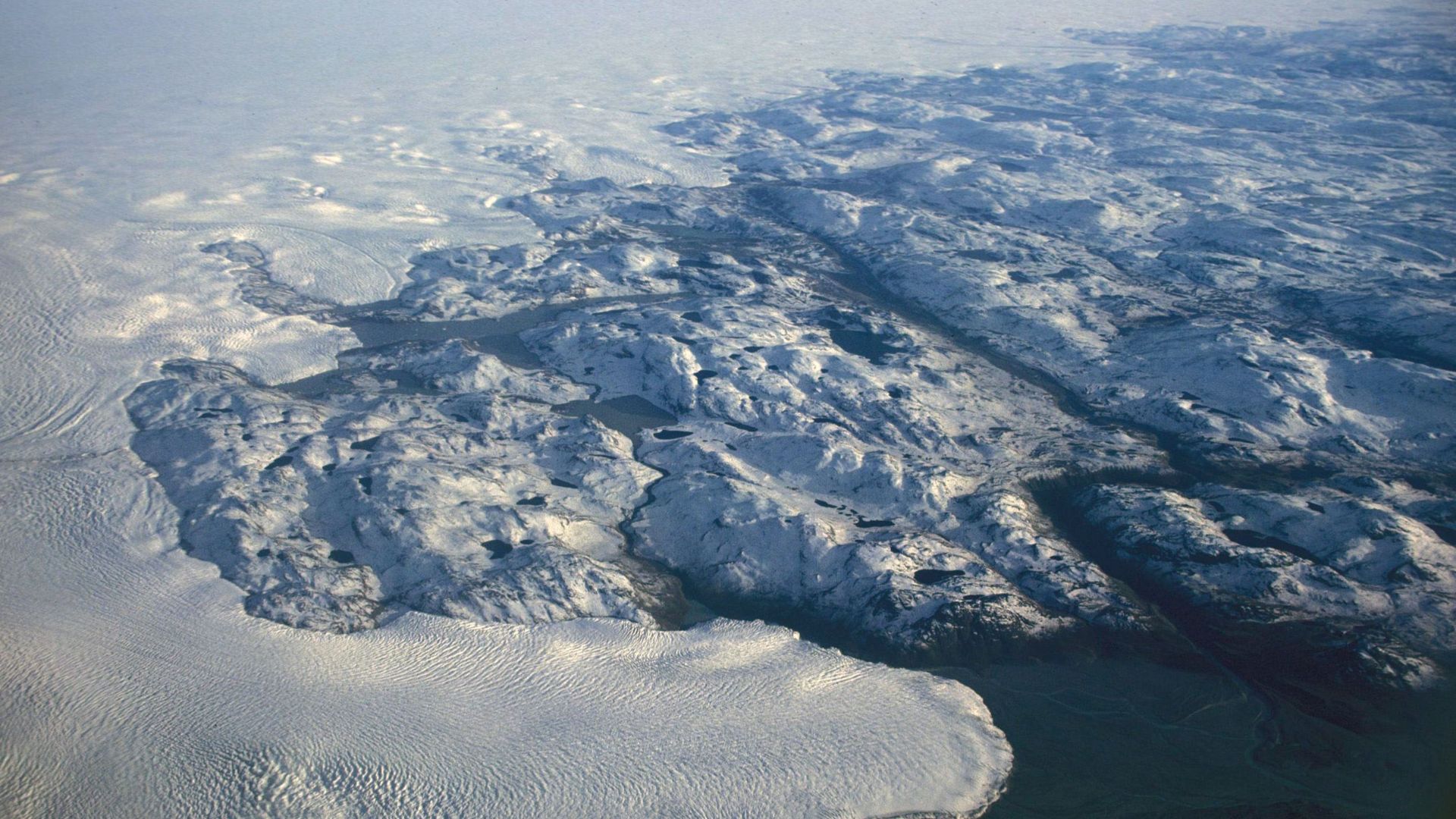 Hannes Grobe, Alfred Wegener Institute for Polar and Marine Research, Wikimedia Commons
Hannes Grobe, Alfred Wegener Institute for Polar and Marine Research, Wikimedia Commons
Pre-Clovis Evidence
However, since the early 21st century, earlier sites like Monte Verde II in Chile (14,500 BP), Paisley Caves in Oregon (14,200 BP), and Cooper's Ferry in Idaho (15,800 BP) have overturned the "Clovis First" model. They pushed human arrival in the Americas back by millennia.
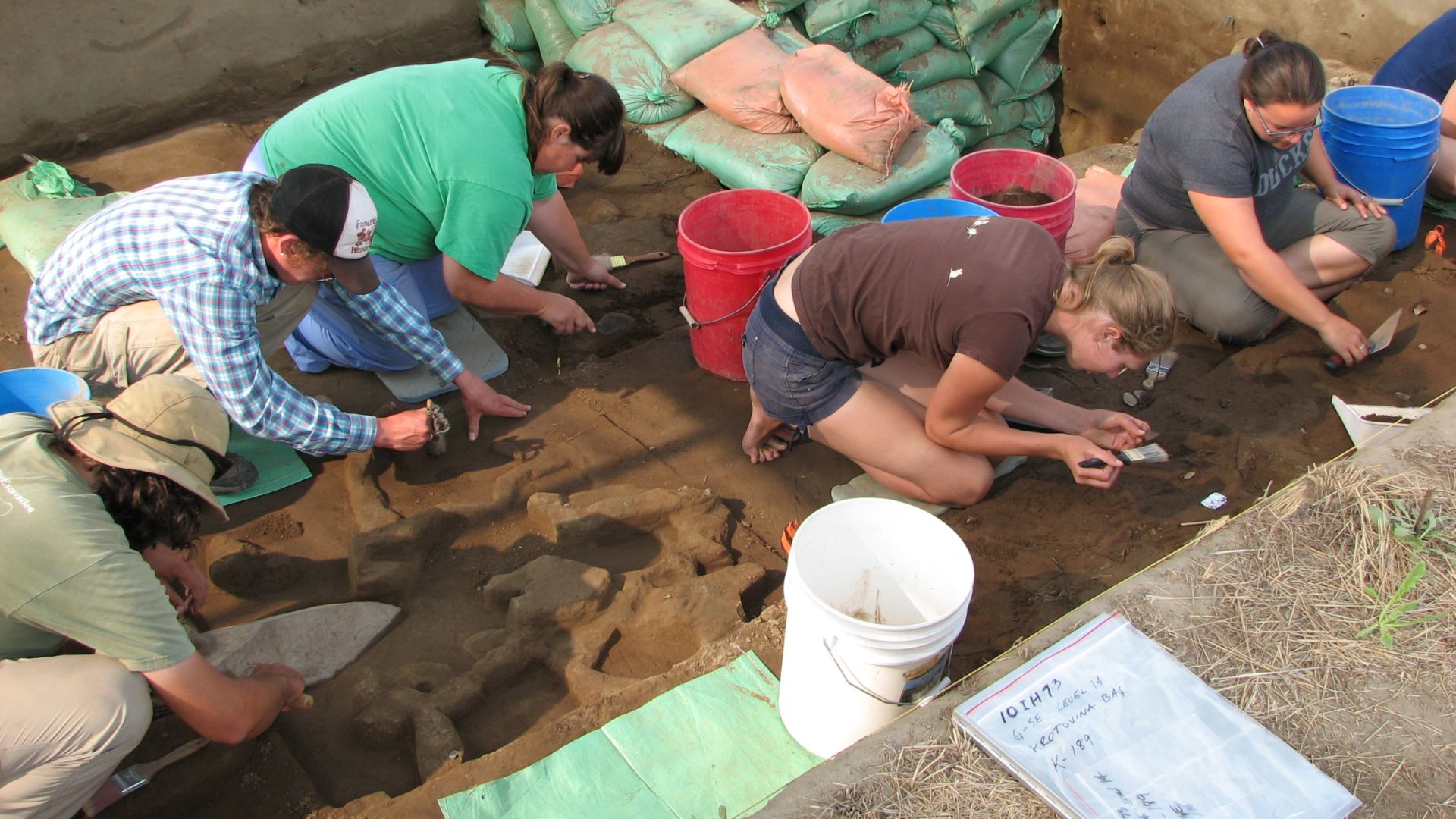 Bureau of Land Management, Wikimedia Commons
Bureau of Land Management, Wikimedia Commons
South American Connections
The Fishtail or Fell point tradition in South America, 13,000–12,000 years ago, exhibits striking similarities to Clovis technology in North America. These projectile points, widespread across South America during the Late Pleistocene, are bifacially thinned and often fluted, resembling the fluted points.
South American Connections (Cont.)
Also, microwear analysis reveals that Fishtail points were bound to foreshafts using sinew or leather cords and adhesives like resin. Damaged points were repurposed into burins or scrapers. They probably played a central role in hunting large prey during the Pleistocene-Holocene transition.
Cultural Transition
Beginning around 12,750–12,600 years BP, the Clovis culture transitioned into more regionally distinct traditions across North America. This shift coincided with massive environmental alterations like the arrival of the Younger Dryas cooling period and the decline of megafauna populations.
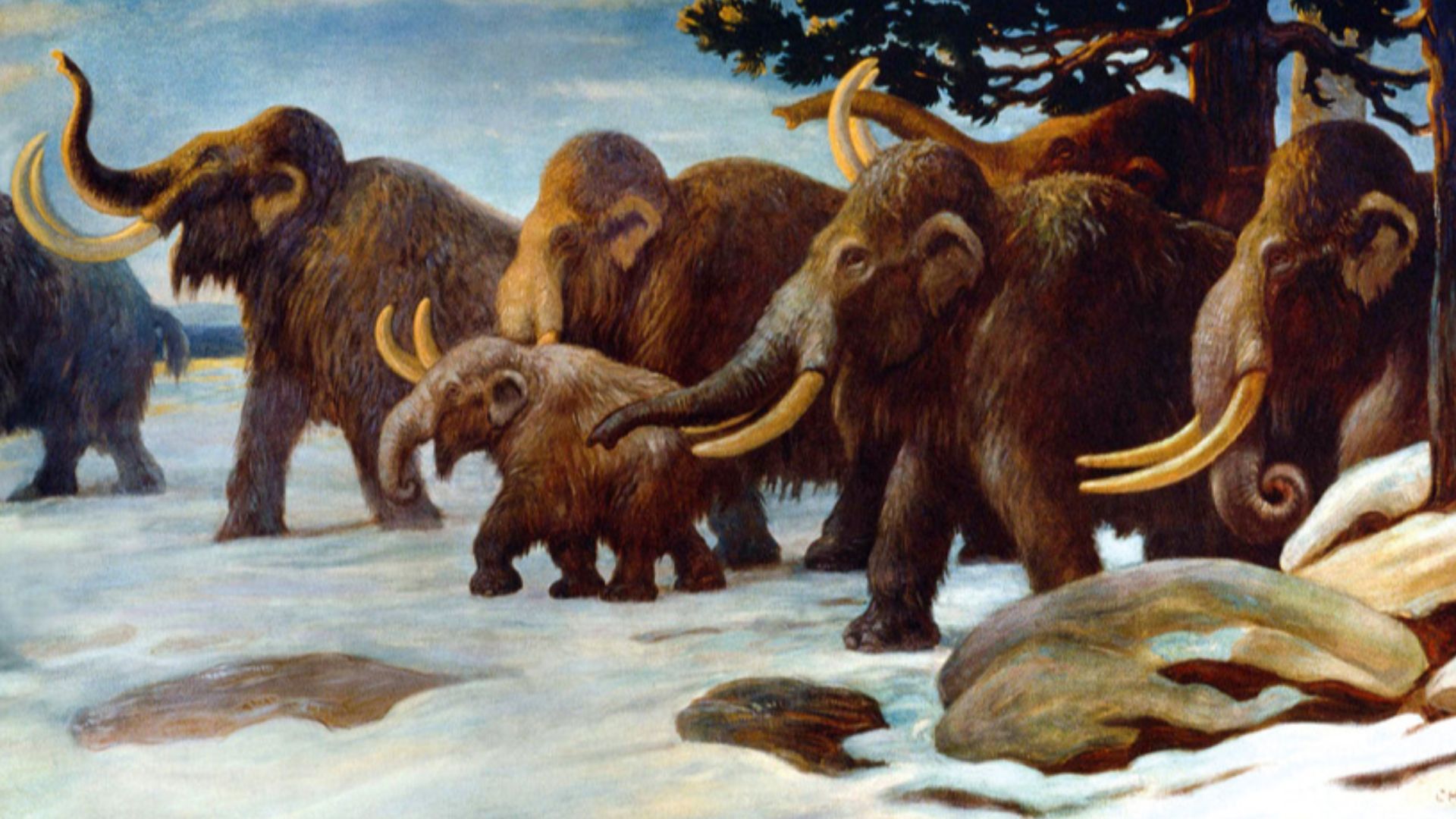 Charles Robert Knight, Wikimedia Commons
Charles Robert Knight, Wikimedia Commons
Successor Traditions
After Clovis, many other regional societies emerged. These include the Folsom tradition in central North America, Cumberland points in mid/southern regions, Suwannee and Simpson points in the southeast, and Gainey points in the Northeast-Great Lakes region. All showed cultural diversification.
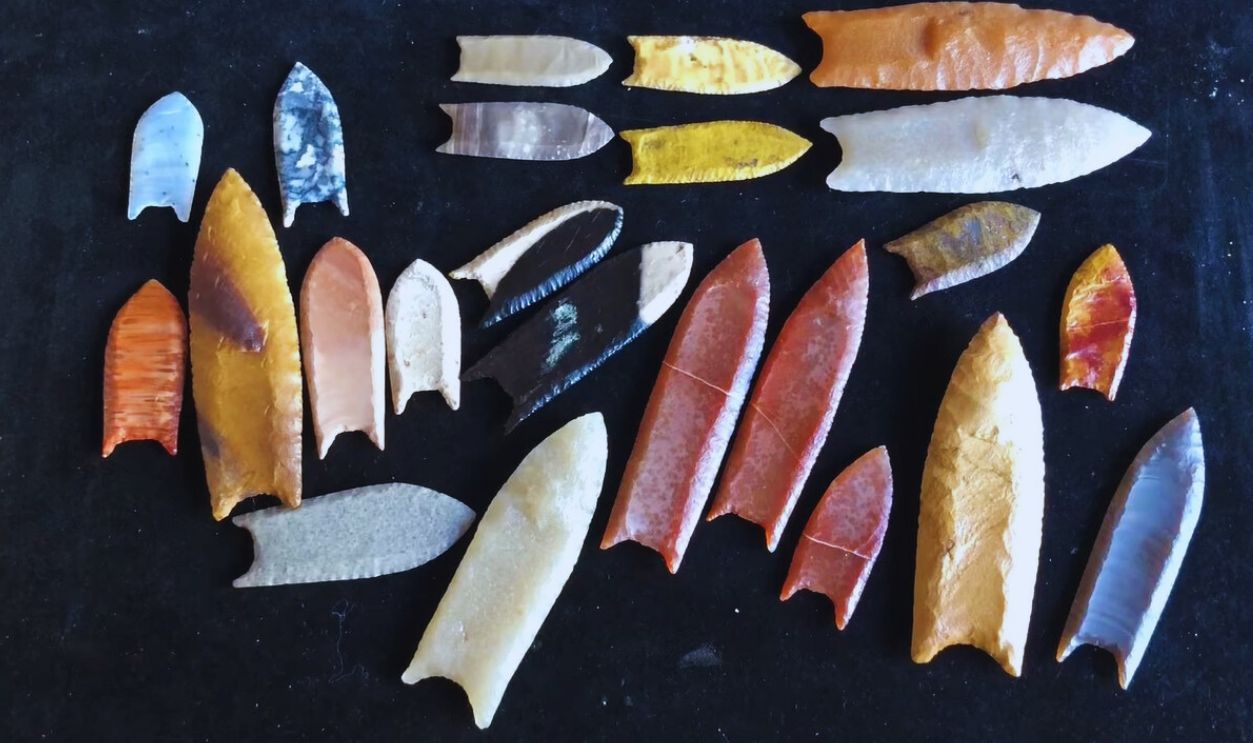 Folsom Point Junkies #3 by Tony Soares Native Clays
Folsom Point Junkies #3 by Tony Soares Native Clays
Folsom Overlap
According to Bayesian modeling of radiocarbon records, the Clovis and Folsom traditions may have overlapped for approximately 80-400 years. The culture, characterized by its fluted projectile points and association with megafauna like mammoths, began to decline during this time.
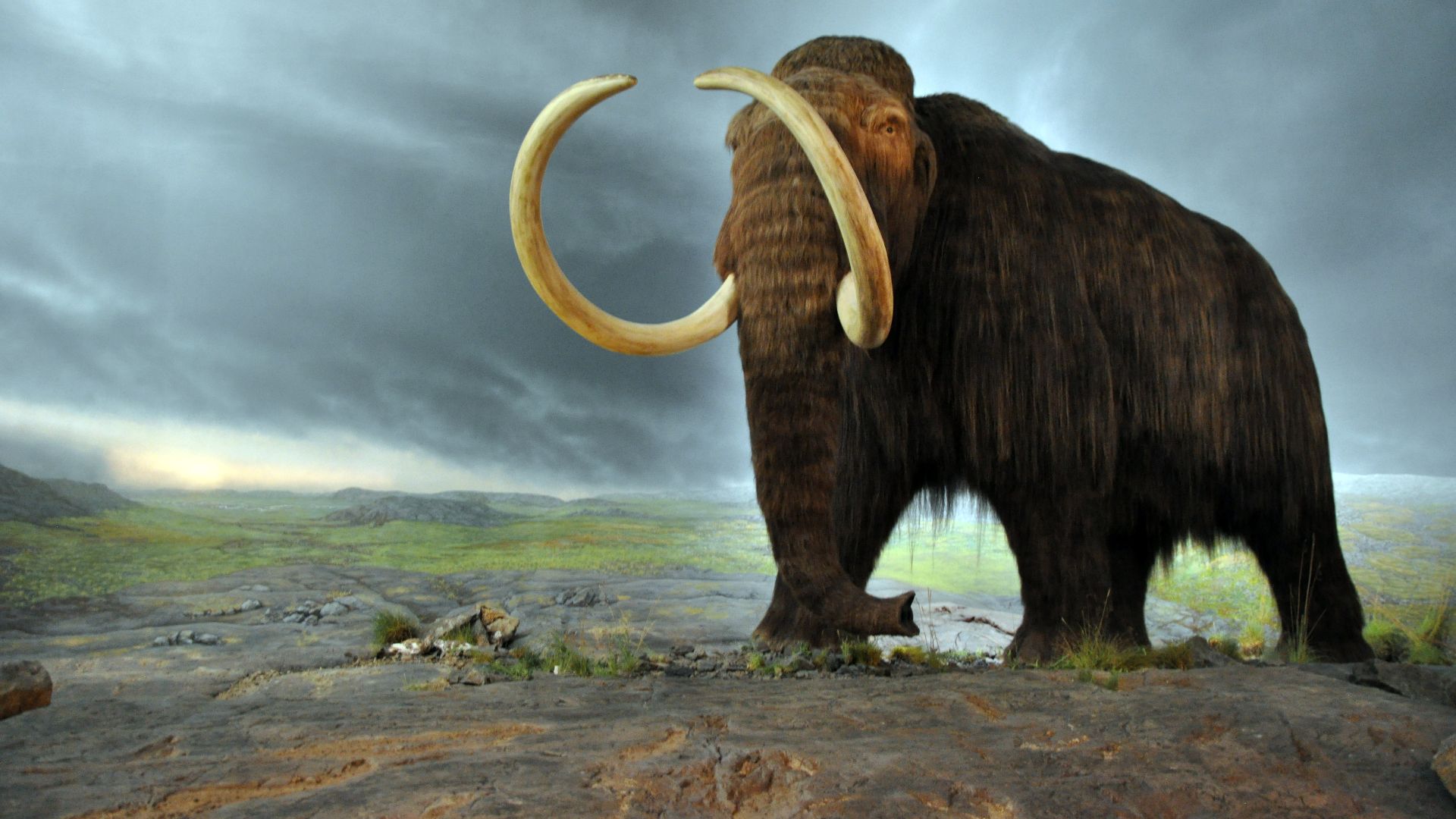 Flying Puffin, Wikimedia Commons
Flying Puffin, Wikimedia Commons
Folsom Overlap (Cont.)
The reasons could be environmental changes, such as the Younger Dryas cooling period and the extinction of large prey species. The Folsom tradition is marked by more minor and delicate fluted points designed mainly for hunting giant bison (Bison antiques).
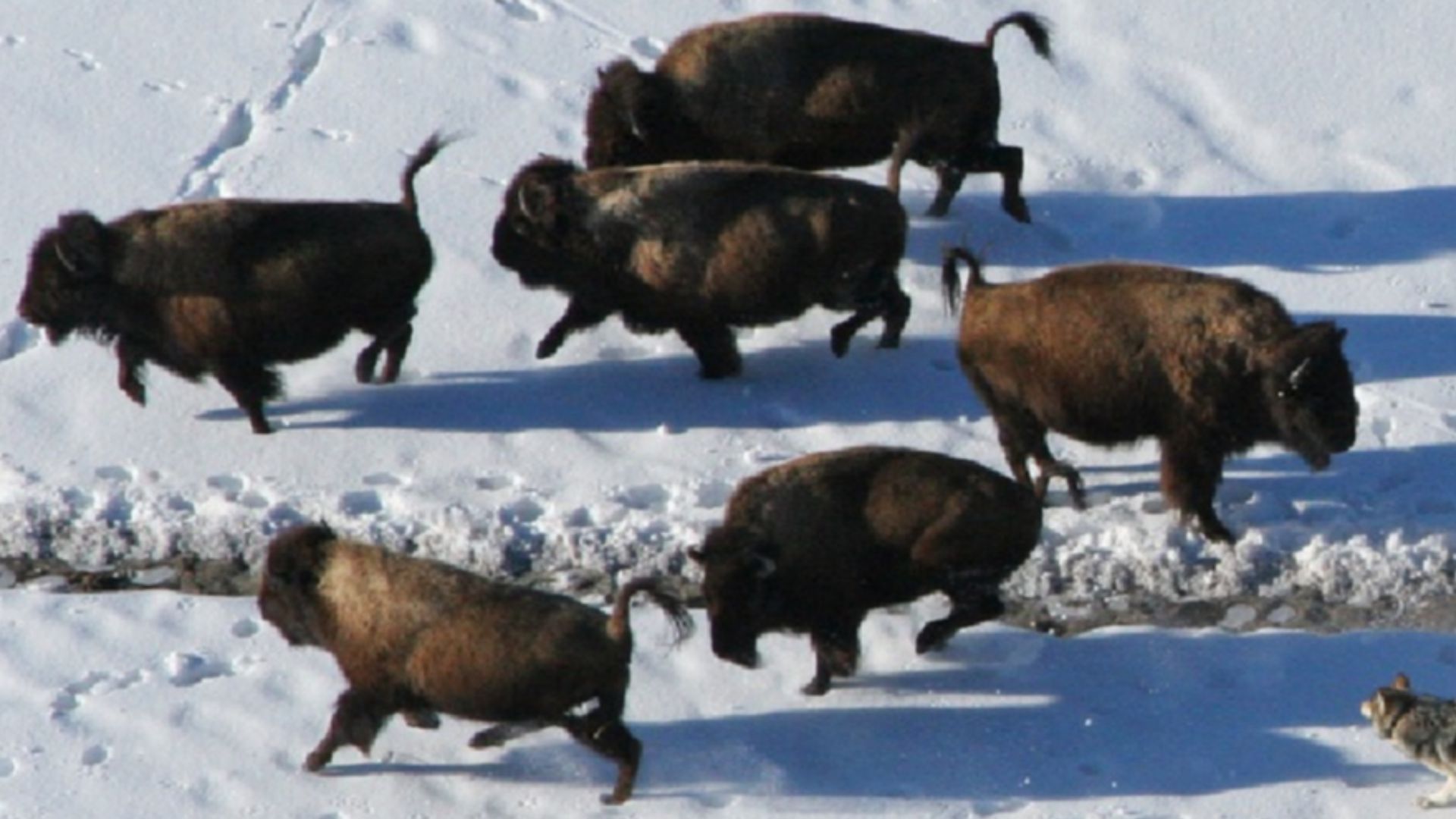 MacNulty DR, Tallian A, Stahler DR, Smith DW, Wikimedia Commons
MacNulty DR, Tallian A, Stahler DR, Smith DW, Wikimedia Commons
Megafauna Extinction Debate
Apparently, the role of the hunters in the extinction of North American megafauna remains a subject of intense debate. While Paul Martin's 1950s "overkill hypothesis" implicated human hunting as the primary cause, more recent research claims that climate change and human impacts drove these extinctions.
Population Characteristics
These inhabitants likely maintained low population densities despite their geographically extensive cultural networks during the terminal Pleistocene. This demographic pattern was characterized by small, highly mobile bands that exploited resources across large territories. Their mobility permitted them to adapt to varying environments.
Beveled Rod Function
Bone and antler rods with beveled ends are enigmatic artifacts associated with the Clovis culture, made from substances such as bone, antler, and ivory. Their exact function may remain uncertain, but several hypotheses have been proposed based on archaeological and experimental evidence.
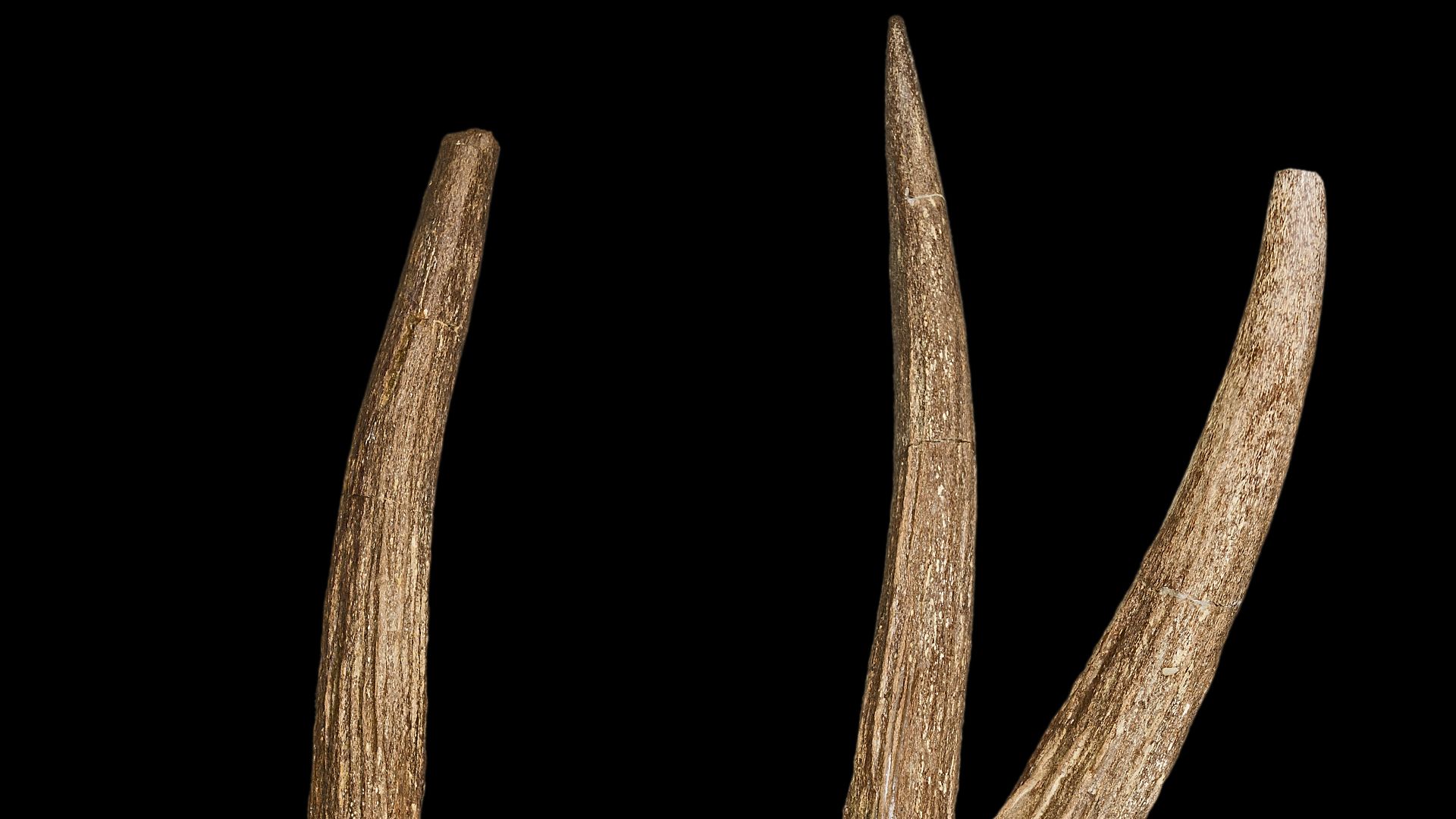 Didier Descouens, Wikimedia Commons
Didier Descouens, Wikimedia Commons
Plant Utilization
Plant remains at these sites, particularly in eastern North America, primarily consist of easily gathered foods such as fruits and nuts, requiring minimal processing. This dietary pattern is supported by these sites' relative scarcity of plant processing tools like grinding stones or mortars.
Archaeological Survey Methods
A 2012 survey published in the SAA Archaeological Record revealed that 63% of archaeologists believe that the extinction of Pleistocene megafauna in North America resulted from a combination of factors. Not a single cause. The consensus reflects the interplay between human activities and climatic changes during the terminal Pleistocene.
Experimental Archaeology
Modern experimental studies, including those conducted by Metin I Eren and colleagues, have tested the effectiveness of Clovis fluted points against simulated elephant hide. This was done as a step to evaluate their viability as hunting weapons for proboscideans such as mammoths.
 Focus on Research - Metin Eren, Archaeologist by KentState
Focus on Research - Metin Eren, Archaeologist by KentState
Experimental Findings
Tests using thrusting and atlatl-thrown Clovis-tipped spears showed that these points could penetrate thick elephant hide, with depths ranging from 5.9 cm to 30 cm in various trials. Some experiments achieved penetration sufficient to reach vital organs like lungs.
 Focus on Research - Metin Eren, Archaeologist by KentState
Focus on Research - Metin Eren, Archaeologist by KentState
Temporal Uncertainty
Many researchers currently favor a short duration of about 300 years, from 13,050 to 12,750 BP, based on calibrated radiocarbon dates. This timeframe aligns with the emergence of Clovis technology and its disappearance coinciding with the onset of the Younger Dryas cooling period.
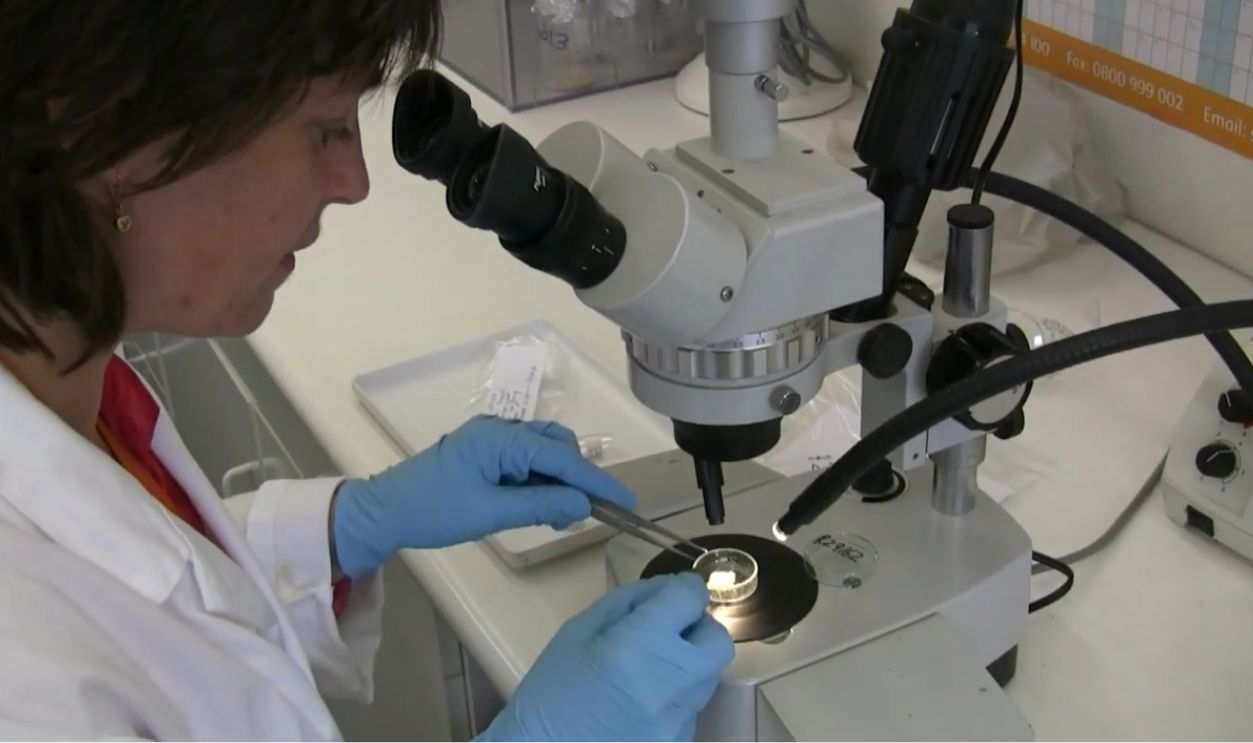 Dating - the Radiocarbon Way by GNS Science
Dating - the Radiocarbon Way by GNS Science
South American Migration
Genetic analysis of around 49 ancient individuals spanning 10,000 years detected that Clovis people migrated from North America to South America approximately 11,000 years ago. Harvard researchers led by Nathan Nakatsuka and David Reich published these findings in Cell Journal in 2018.
 Christoph Bock, Max Planck Institute for Informatics, Wikimedia Commons
Christoph Bock, Max Planck Institute for Informatics, Wikimedia Commons
Unexplained Disappearance
The study also said that the Clovis people mysteriously vanished from South America around 9,000 years ago and were replaced by groups with different genetic ancestors. The cause of this large-scale population replacement remains unknown, which creates an intriguing research question for modern archaeologists.

